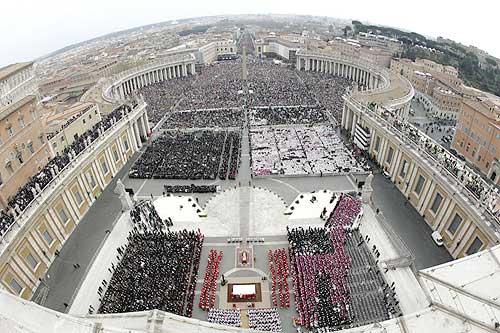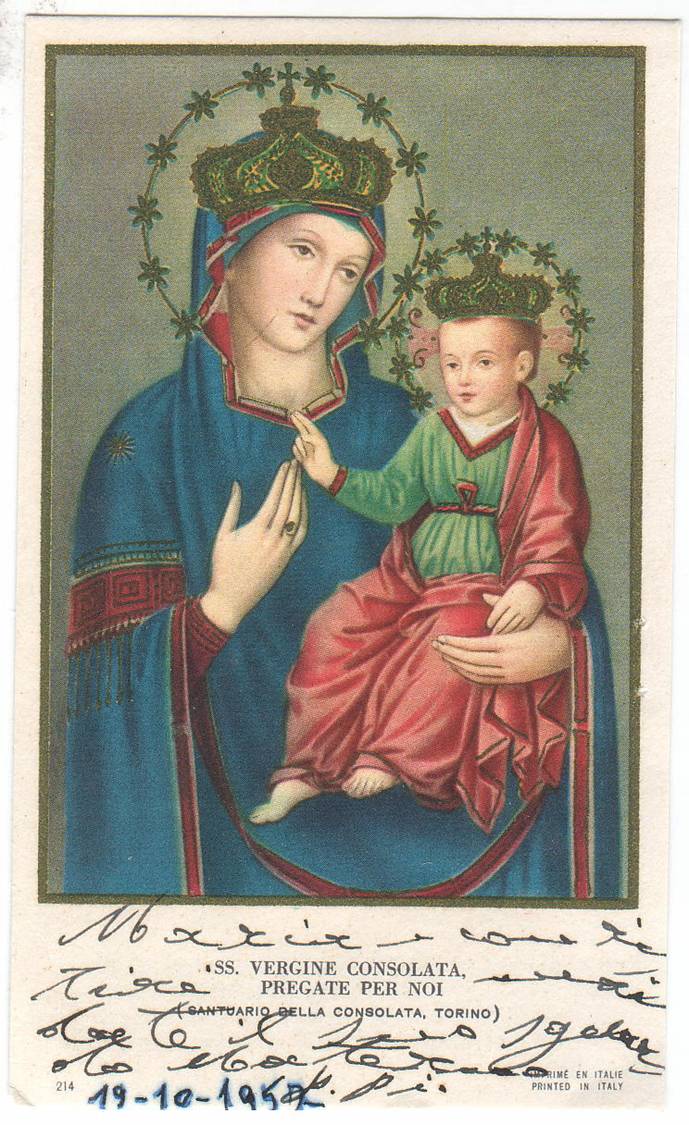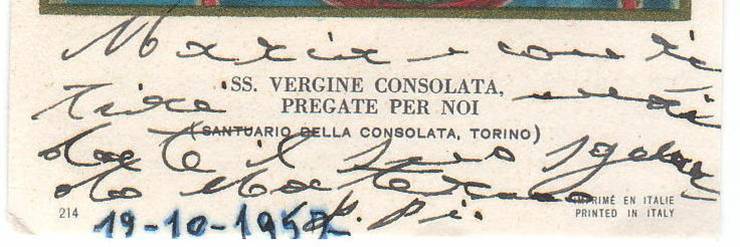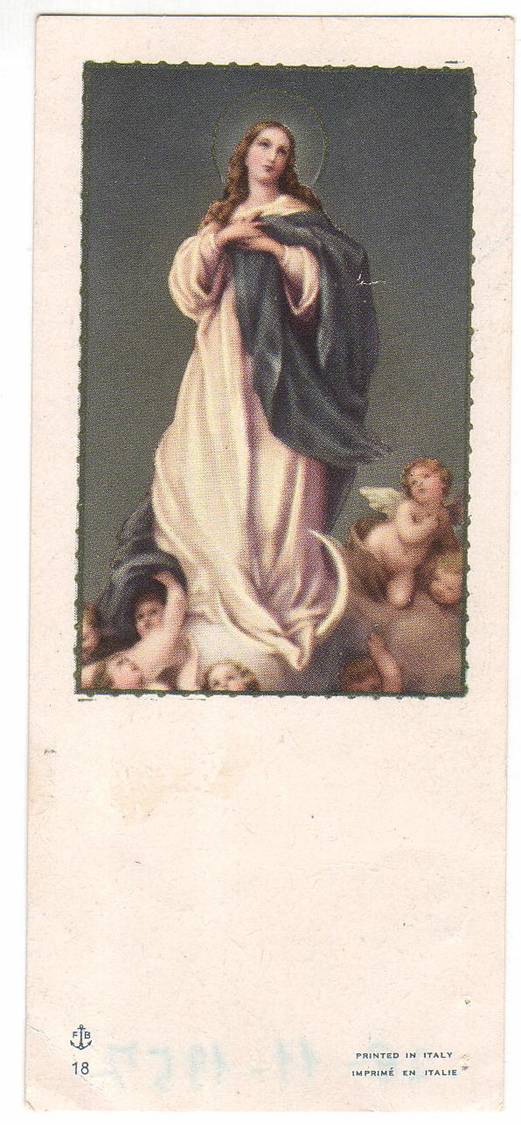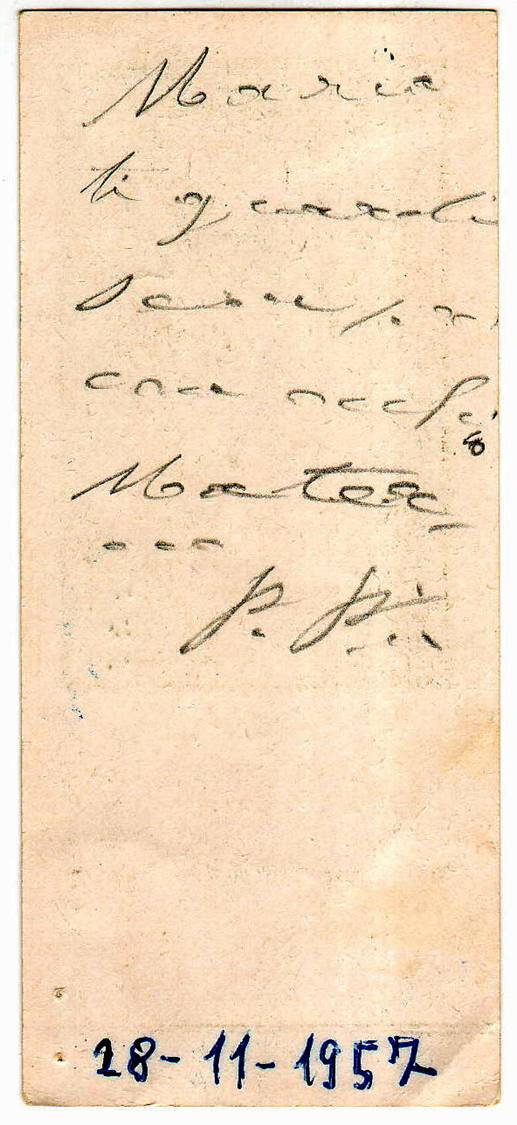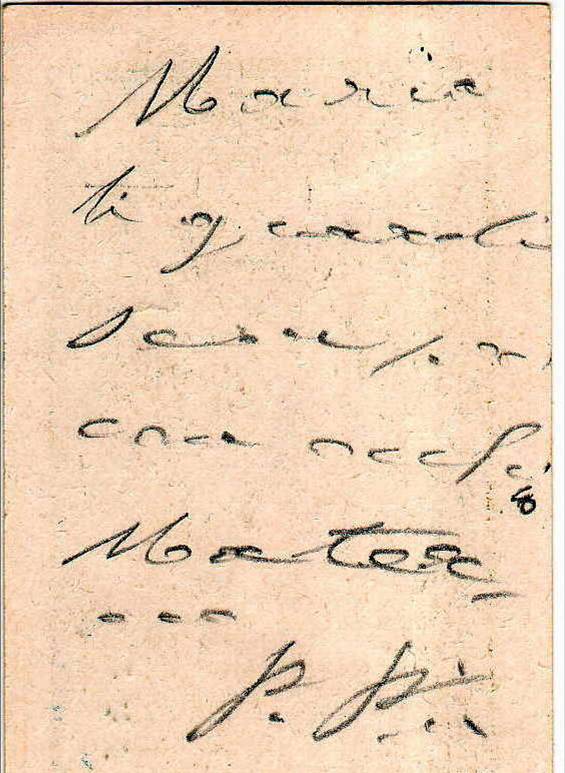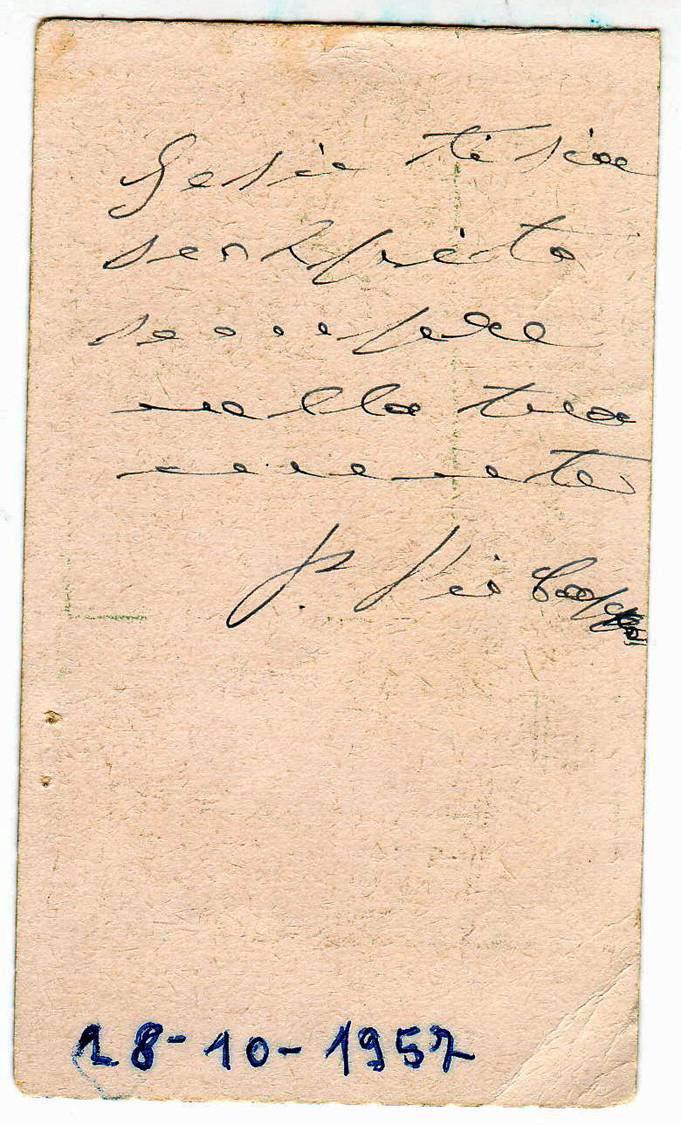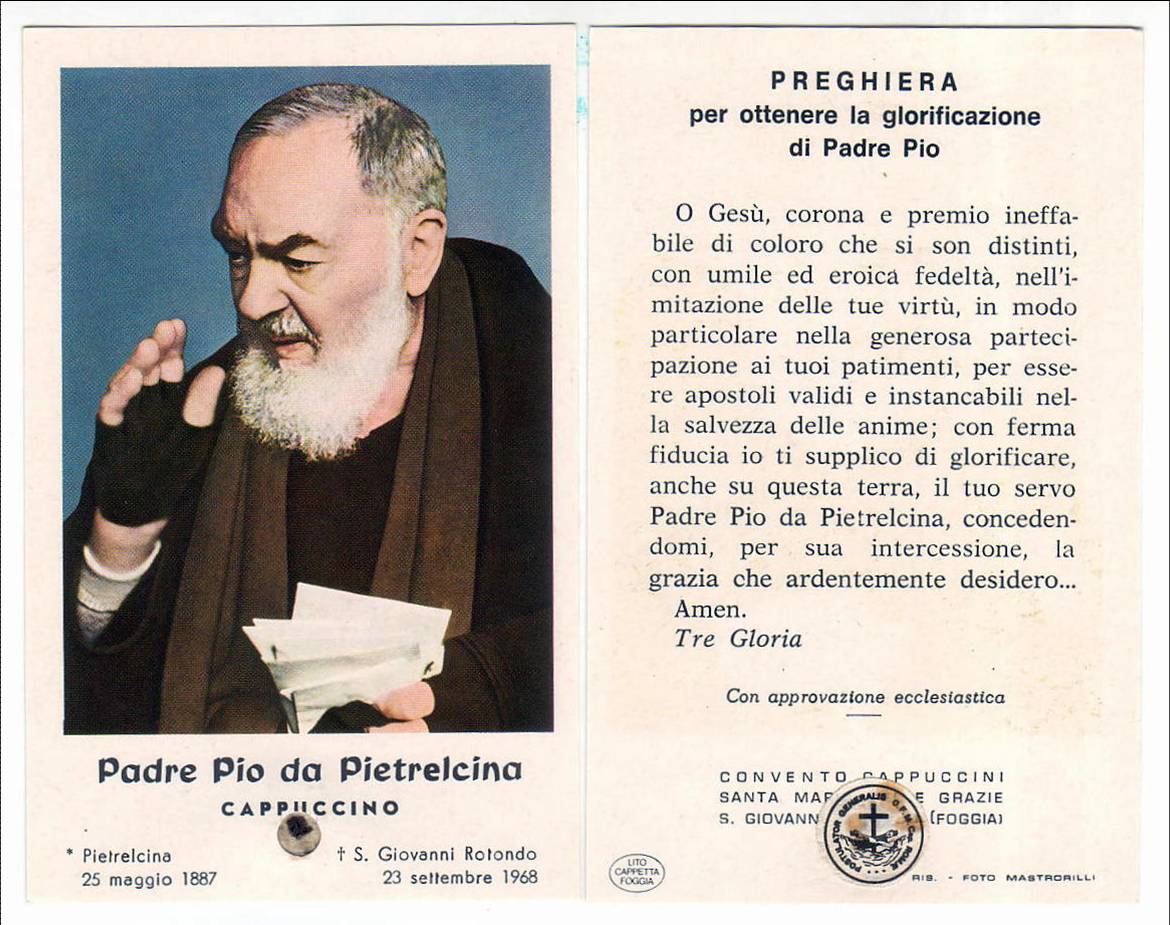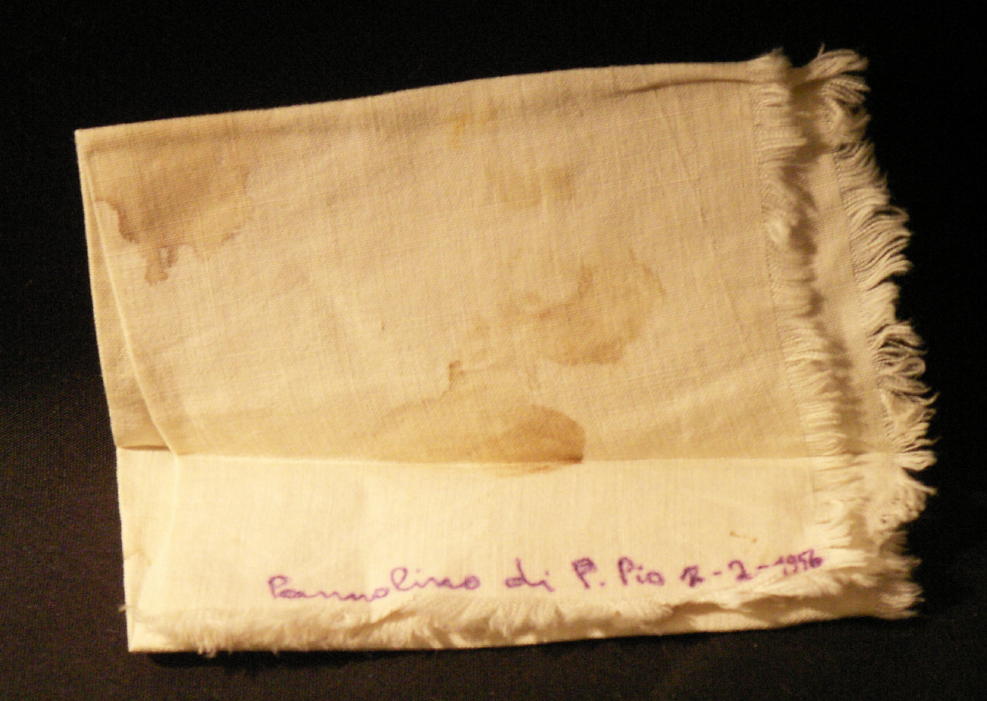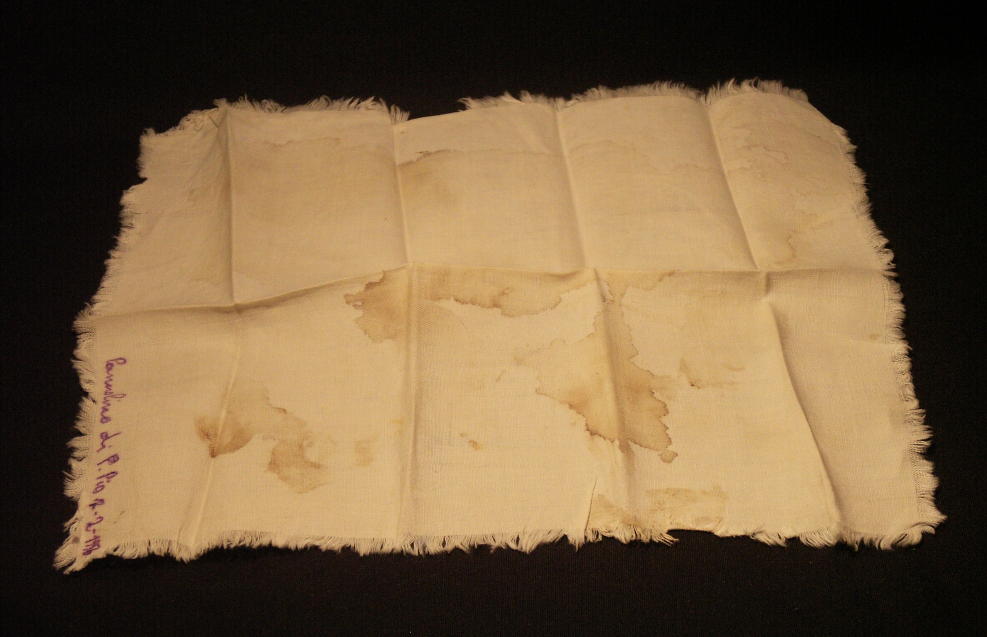|
Saint Pio from Pietrelcina
Padre Pio was a capuchin friar who spent 52 years in the San Giovanni Rotondo convent. He was the only catholic priest who has received the stigmata. He celebrated Mass from 5 to 8 and heard the confessions of men and women from 8 to 5. He prayed the rosary several times a day, conceived and realized a hospital for the poor, and dreamed of a church large enough to accommodate the crowds of pilgrims who visit San Giovanni Rotondo. He never went on vacation, never had an advancement in career, never wrote a book. He did not make eloquent speeches and never waived in his obedience to the Church. He was focused only on loving God, saving souls, and alleviating suffering. He would enumerate the sins those confessing to him had forgotten, he bilocated in many places all over the world usually accompanied by an intense perfume, he advised on events that would be coming. His wounds never stopped bleeding. His body never stopped suffering. His mind never stopped thinking of God. His lips never stopped praying, and his heart never stopped loving. |
|
"Christ is my life" |
|
Padre Pio was born in Pietrelcina, 8 miles from Benevento, Campania region, southern Italy |
|
" I remember every stone of Pietrelcina. It will be the apple of my eye" |
|
|
|
"Say hi to Pietrecina. I have it sealed in my heart" |
|
Padre Pio's parents: Grazio Forgione and Maria Giuseppa Di Nunzio |
|
Padre Pio was born in this house on May 25, 1887 |
|
Inside of the house. Padre Pio was the fourth of seven children. |
|
" Everything happened there. Jesus was there" |
|
St. Anna's church, where Padre Pio was baptized on May 26, 1887, the day after his birth |
|
From his spiritual director we know that from the age of five he had ecstasies and decided to consecrate himself totally to God. |
|
The young Francesco studied in his middle school years with a private tutor, using the money that his father sent from the Unites States of America, where he was an immigrant like many others from the area |
|
"My father crossed the ocean twice to give me the possibility to become a friar" |
|
On January 6, 1903, at the age of 16, he decided to become a novice at the convent of Morcone (Benevento), where the following January 22, he received the Franciscan robe, taking on the name of brother Pio.
|
|
The convent at Morcone, and brother Pio's cell |
|
"Where better could I serve you, o Lord, if not in the cloister and under the flag of the poor little one of Assisi?" |
|
From Morcone he moved to Sant'Elia a Pianisi (noted by a star) for high school, and subsequently to San Marco la Catola to study philosophy.
|
|
"I want to be a friar with a beard" |
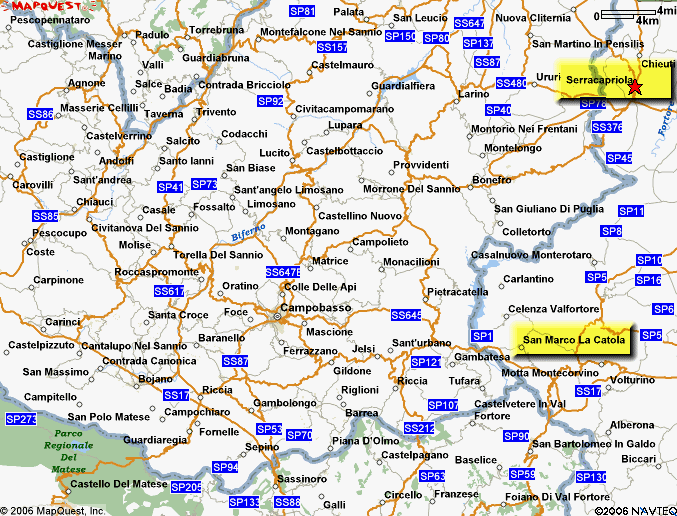
On January 1907 brother Pio professed the solemn vows and moved to Serracapriola to study theology under the tutoring of father Agostino, his spiritual director, and of father Benedetto, head of the province. Both teachers were from San Marco in Lamis.
|
|
"I, brother Pio from Pietrelcina, ask and promise to God the Omnipotent, and to the blessed Virgin Mary, and saint Francis, and all the Saints, and to you o father, to observe in all my life the Rules of the Minor Friars, confirmed by pope Onorius, living in obedience, poverty, and chastity" |
|
Serracapriola: the town, the convent, the dining room |
|
Padre Pio continued studying philosophy in Montefusco and in Gesualdo (two villages indicated by stars). |
|
Convent of Montefusco Convent of Gesualdo |
|
On December 1908, in Benevento, he received the minor orders and the sub diaconate. In all that time he suffered from an unexplainable and painful disease that would keep him away from the capuchin community. Padre Pio was ordained a priest on August 10, 1910, in the cathedral of Benevento. |
|
|
|
" I'm devoured by the love of God and my neighbor " |
|
In the month of October 1911, after a physical examination by dr. Antonio Cardarelli in Naples, Padre Pio was sent to Venafro. According to the diagnosis of the celebrated physician, the young friar's days were numbered, and he couldn't travel long distances which is why he was sent to Venafro, location of the closest convent. During the month and a half stay in that convent, the community noticed the first supernatural phenomena: divine ecstasies lasting up to one hour, and diabolic apparitions lasting a few minutes. |
|
In February of 1916, he was sent to the convent of saint Anna in Foggia in search of a more suitable place for his frail health. But even there he continued to feel sick: vomiting, sudden sweats, dizziness, and a very high fever. At night, terrifying noises came from his room. They ended with a boom that would shake the walls and terrorize the other friars. He told father Benedetto that it was the devil who, unable to win, exploded in fits of rage. In July 1916, he went for a supposedly brief stay to the convent of San Giovanni Rotondo, just for the summer. The climate appeared to be beneficial to him, and instead of a few weeks, he stayed there for 52 years, until his death. |
|
|
|
" I live for Jesus Christ, I live for his glory, I live to serve him, I live to love him" |
|
The eleven convents where Padre Pio stayed during his life.
|
|
" God is always fixed in my mind and imprinted in my heart " |
|
There was no paved road when Padre Pio went to San Giovanni Rotondo. In time things changed greatly.
|
|
" Do not doubt divine help " |
|
Padre Pio's cell at San Giovanni Rotondo's convent
|
|
St. Francis of Assisi had the stigmata. But Saint Francis was not a priest. He was a deacon. The stigmata are the bodily wounds on the hands, feet and side corresponding to those inflicted on Jesus at the Crucifixion.
|
|
" Lord I want to expiate the sins of all, like you did on the cross " |
Padre Pio is the only ordained Roman Catholic Priest to receive the stigmata
|
|
The Crucifix from which Padre Pio received the Stigmata, located in the choir loft of the original church. Padre Pio received the stigmata on September 20, 1918, while praying after celebrating Mass. He was 31 years old. |
"Suddenly I was wrapped in a sea of blazing light. In that light I saw Jesus. He was very beautiful. From his wounds came rays of very bright white light that penetrated my hands, my feet, my side. They were like blades of fire that penetrated my skin piercing, cutting, breaking. I felt that I would die. The pain was immense" |
|
He used to cover the wounds with gloves that would leave his fingers free.
|
|
"Do you think that the stigmata are simply decorations?" |
|
Sometimes his superiors ordered him to uncover his hands so that the wounds could be photographed.
|
|
" Leave me the pain, but remove from me these signs that embarrass me " |
|
He used to remove the gloves before celebrating Mass. The wounds could be observed during the celebration of the Mass
|
|
Padre Pio celebrated mass in the church of the convent. It was small and crowded
|
|
A new church was consecrated on July 1, 1959
|
|
Padre Pio spent most of his day from 8 to 5 hearing confessions.
People would come to him from all over the world. He heard the
confessions in the old church, even after the new church was built.
For the women there was a confessional. The men confessed in the old
sacristy.
"O lord, don't strike my poor brothers, strike me"
|
|
"Pray the rosary frequently. It costs so little, and it's worth so much!" |
|
Padre Pio used to carry a rosary in his hands and would pray it many times a day.
" I am only a poor sinning friar who prays "
"Don't you know that good works are the fruit of many tears and of a lot of suffering?" . " Suffering is my daily bread and my delight "
April 16, 1965 |
|
Padre Pio had many spiritual children. he would get all of their messages, written or sent to him by other means, and he would find a way to answer to all of them.
"Praying is the pouring of our heart into the heart of God"
"When the lord will call me, I'll tell him: Lord, I'll wait at the door of Paradise: I will enter only when I've seen the last of my children enter"
|
•
"The good Lord gave me an earthly mission: the creation of a clinic for the poor of soul and body. The clinic will rise beautiful and large"
To serve poor people, Padre Pio raised money, and built a free Hospital, and called it “The House for the Relief of Suffering”. Mary Pyle, an American citizen, was of special help to him.
Padre Pio at the ribbon cutting ceremony on May 5, 1956
"Here will stand the largest center for the cure of the human ailments"
|
|
"when it is done well, prayer moves the divine heart, and solicits answers more and more" |
| The Prayer Groups of Padre Pio The Prayer Groups were started by Padre Pio in the 40's, are disseminated all over the world. They are mentioned for the first time in the June 1950 issue of the "Bollettino della Casa Sollievo della Sofferenza" (see a random issue below). They are spontaneous groups, linked by the love for Padre Pio, and, in tune with the Church. participants resolve to follow the principles of the Franciscan spirituality of Padre Pio. The groups are under the guidance of the 'Opera di Padre Pio'
|
|
Other moments in the day of Padre Pio
"My food is to do god's will"
"Help me to carry the Cross, I who carry it for all"
"Focus on and remove the defect that most prevents you from joining God"
"In the end, the gamble of our
life is all in this Child. In him everything has an answer, even
to the most difficult questions. Without him - only a big void." |
|
these are facial expressions of Padre Pio
"die or love god"
September 2, 1965
November 3, 1965 |
|
"It is easier for the earth to be without the sun than without the mass" |
|
The highlight of Padre Pio's day was the Mass. It lasted from 90 minutes to more than 3 hours.
|
|
During the mass one could feel that he had a direct line with the supernatural.
|
|
The last mass celebrated by Padre Pio on September 22, 1968 |
|
Padre Pio died on September 23, 1968 |
|
Padre Pio's grave
Pope John Paul II visited Padre Pio's grave on May 27, 1987 |
|
Padre Pio Was Proclaimed
Blessed on May 2, 1999. He was proclaimed a saint on June 16, 2002.
The ceremonies were presided by the pope John Paul II, in Saint
Peter's square. Hundreds of thousands of pilgrims were present.
Padre Pio's church in San Giovanni Rotondo the day of the ceremony:
Pictures from Saint Peter's Square:
|
|
In 2004 there was the grand opening of the new church near the convent of Padre Pio in San Giovanni Rotondo designed by the architect Renzo Piano.
|
|
"Always be thankful to the Lord for what you have received. This will be the best approach to receive more favors" |
|
Rosary held and blessed several times by Padre Pio |
|
Crucifix that Padre Pio blessed, kissed, and held in his hands several times |
|
Prayer card handwritten by Padre Pio on October 19, 1957. "May Mary never withdraw from you her maternal sight" |
|
Prayer card handwritten by Padre Pio on November 18, 1957. "May Mary gaze upon you with maternal eye" |
|
Prayer card handwritten by Padre Pio on October 18, 1957. "May Jesus always be etched in your mind P.Pio Cappuccino" |
|
One of the very first payer cards issued after Padre Pio's death to obtain his glorification. |
|
Cloth used by Padre Pio on the wound on his side, on February 7, 1957 |
|
Original 32 x 24 inches byzantine icon of Padre Pio by artist Beverly Layton, Lawton 2005. |
|
"When we do something, let's do it as if it were the last thing we will ever do" |
.jpg)
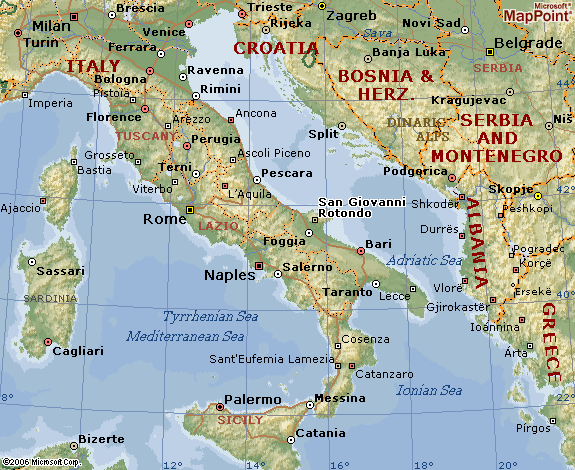
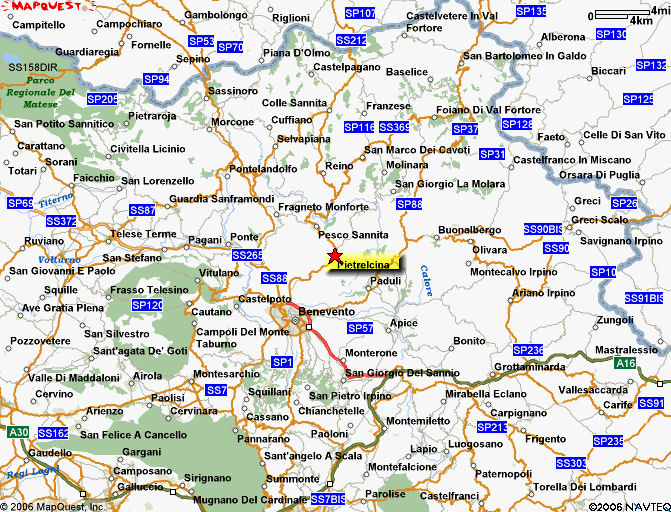
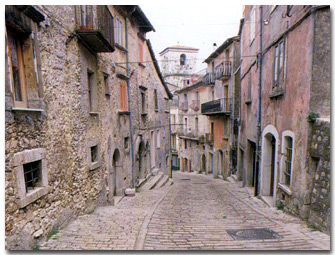
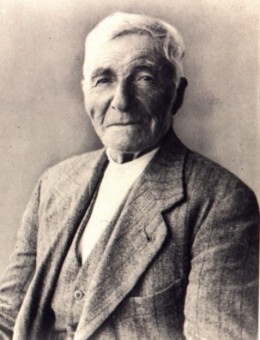
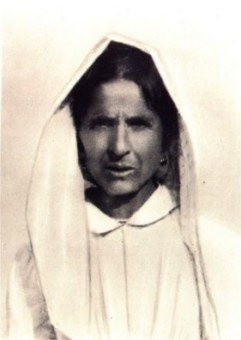
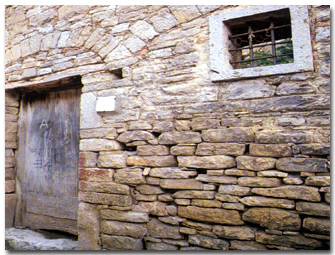
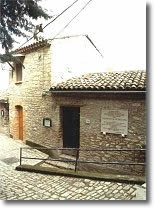
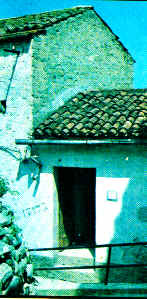
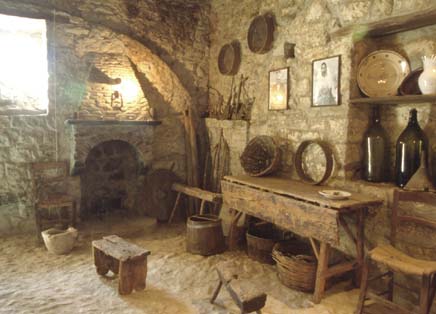
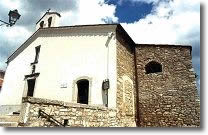
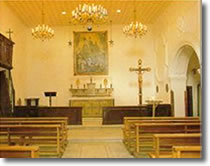
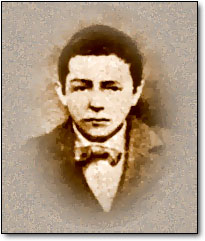
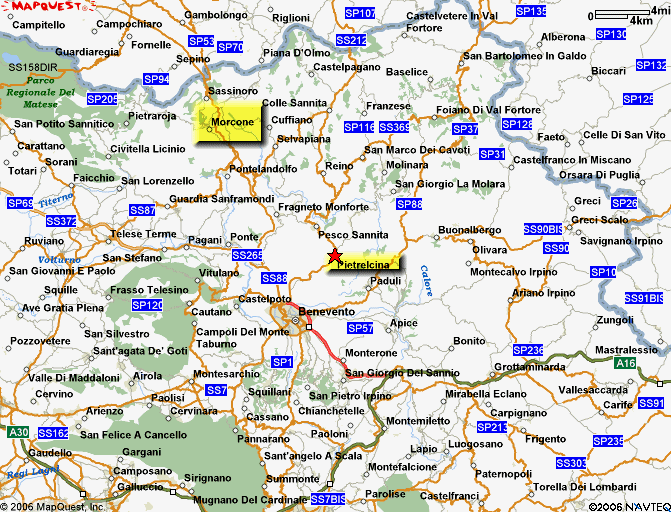
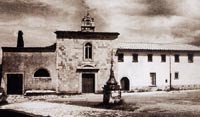
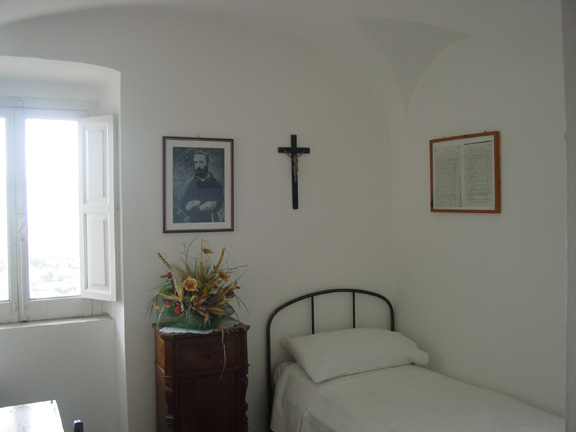
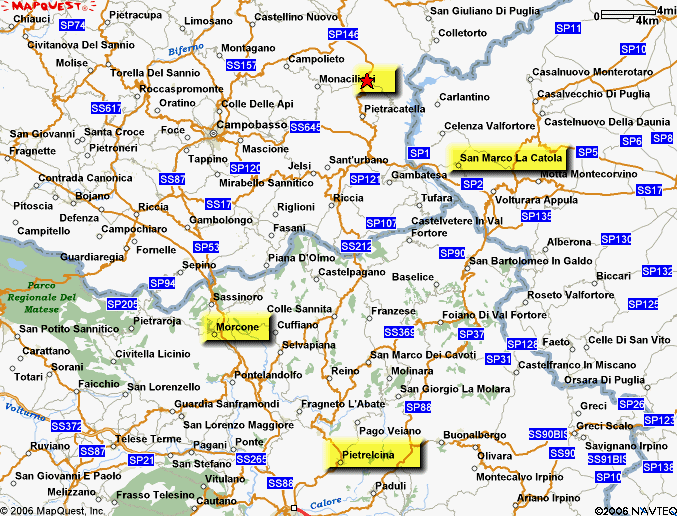
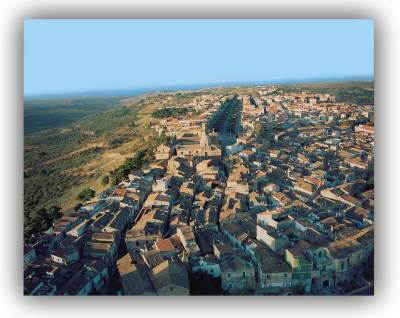
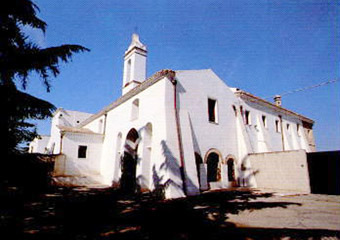
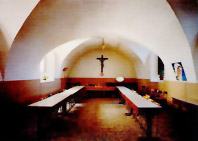
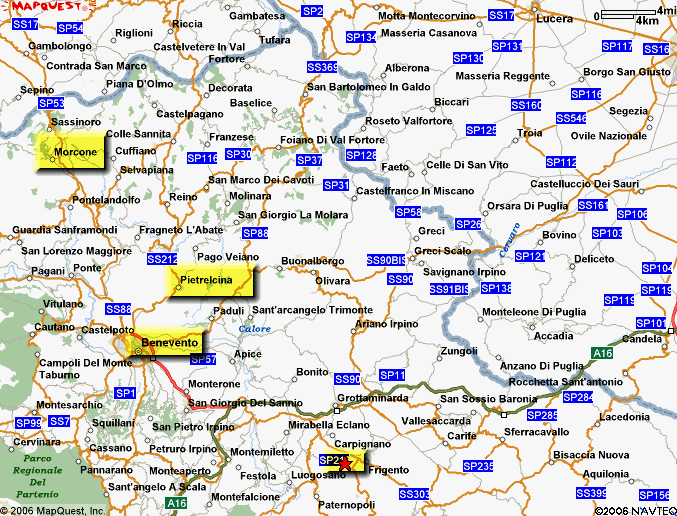
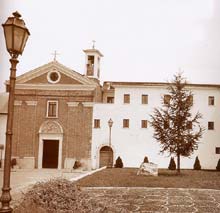
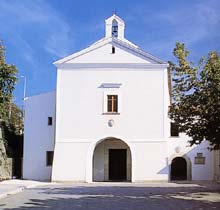
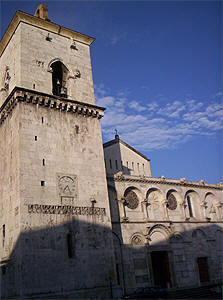
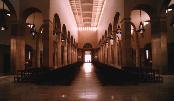

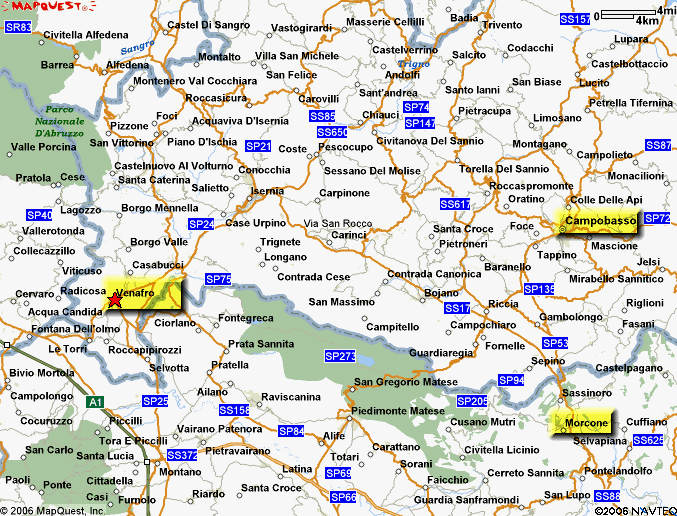
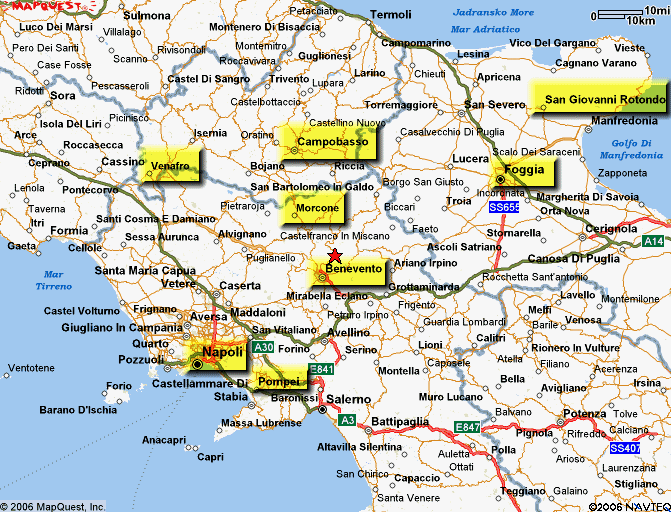
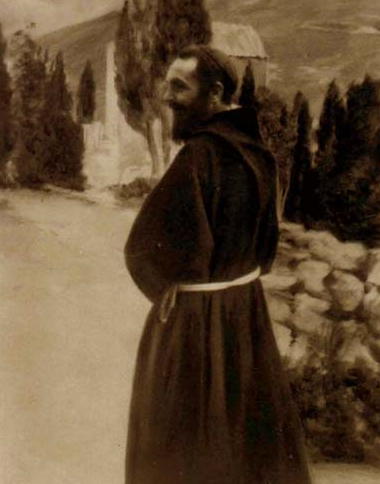
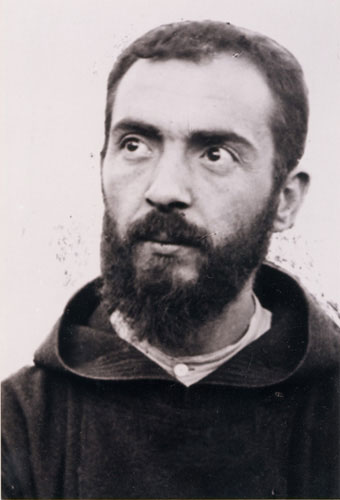
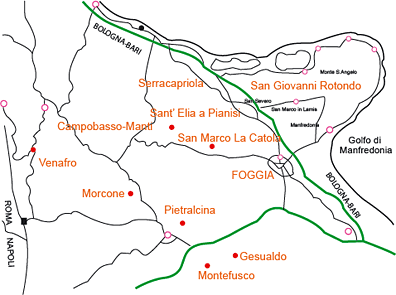

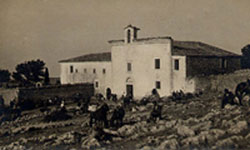

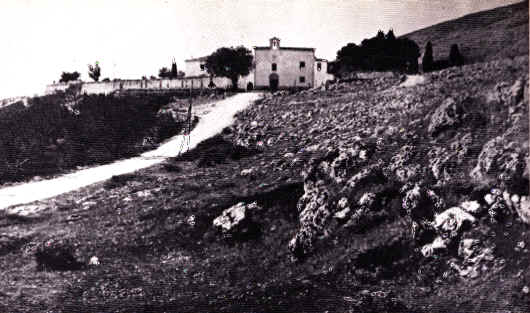


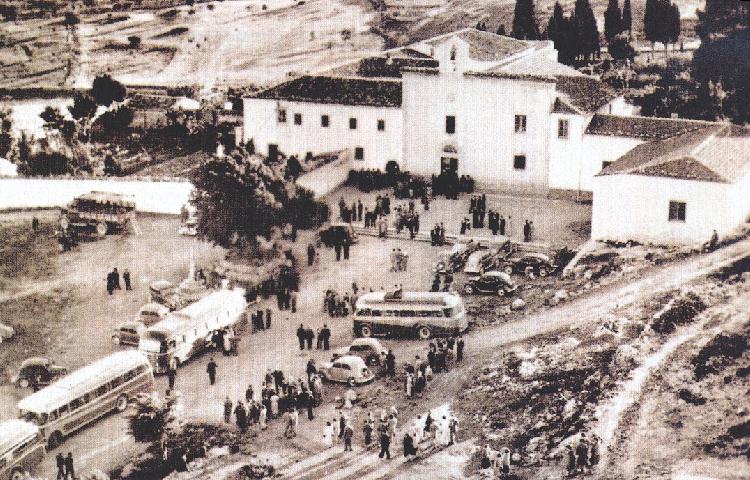
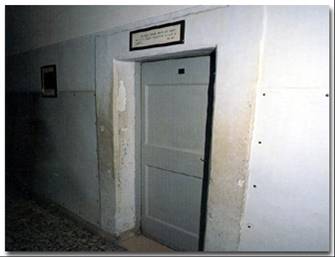
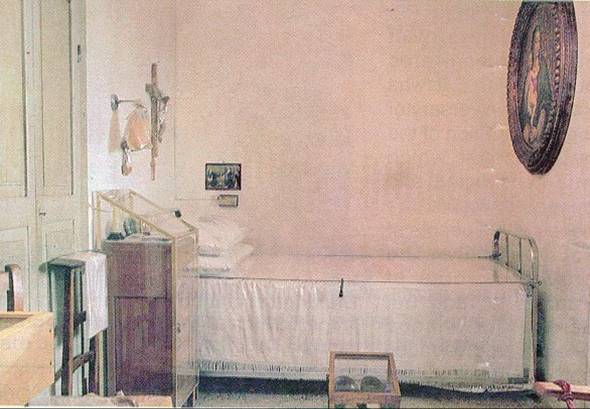
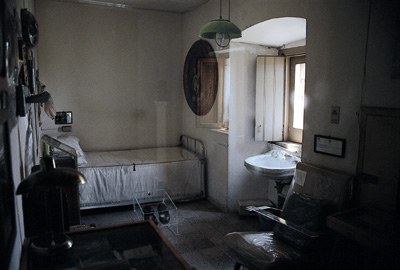
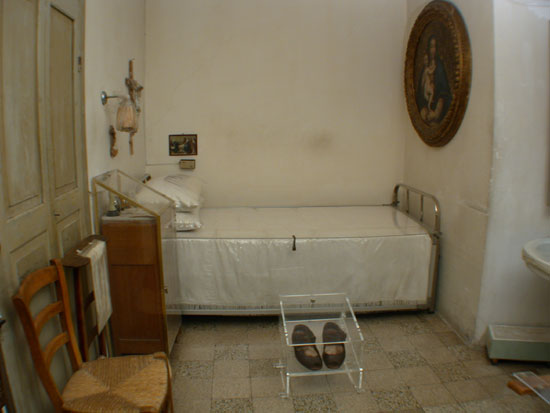


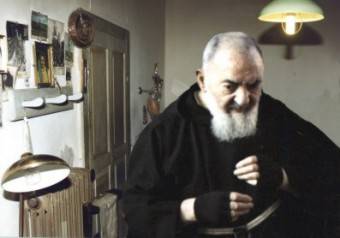
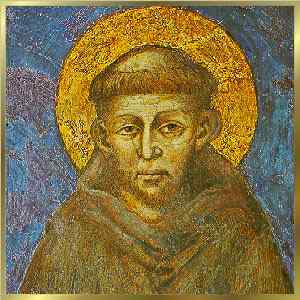
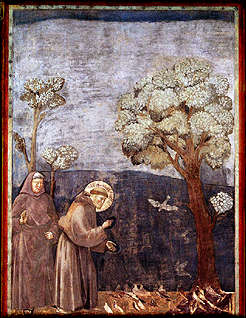
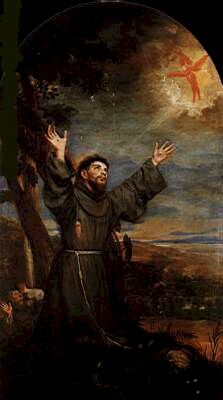
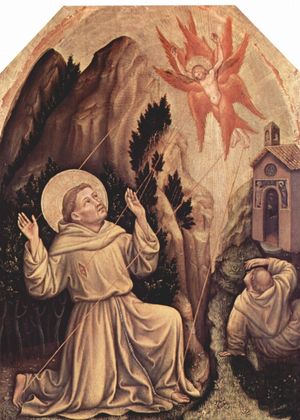
.jpg)
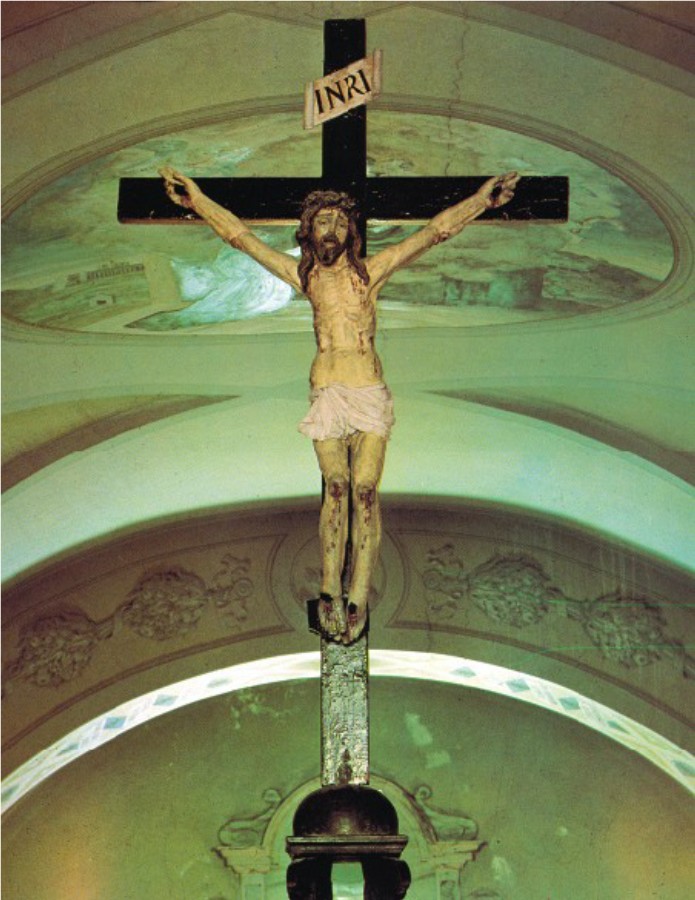
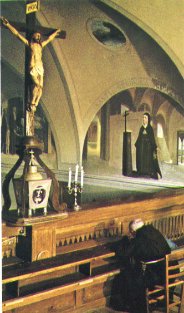
.jpg)
.jpg)
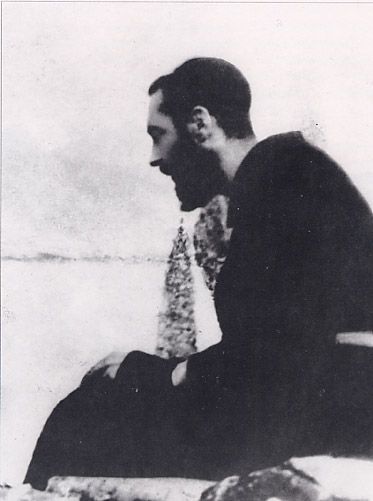
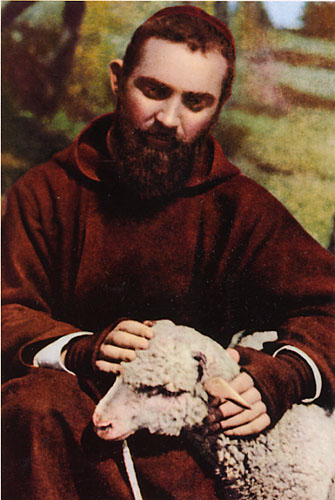
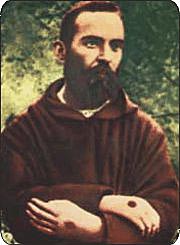
.jpg)


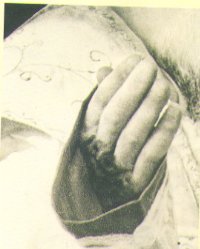
.jpg)

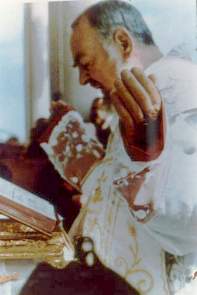



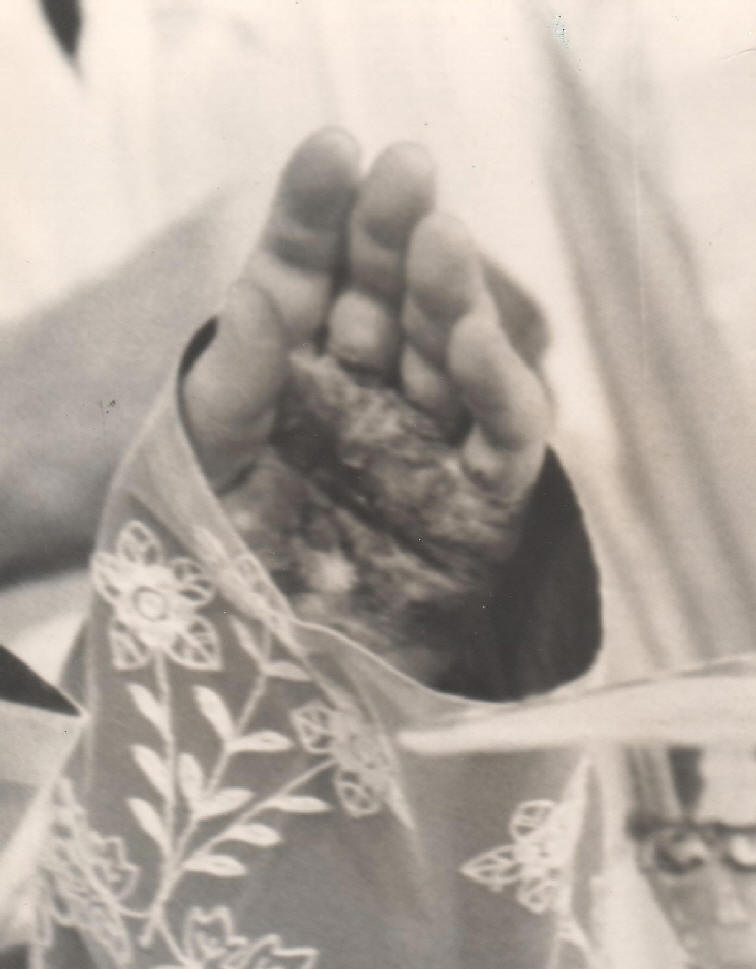
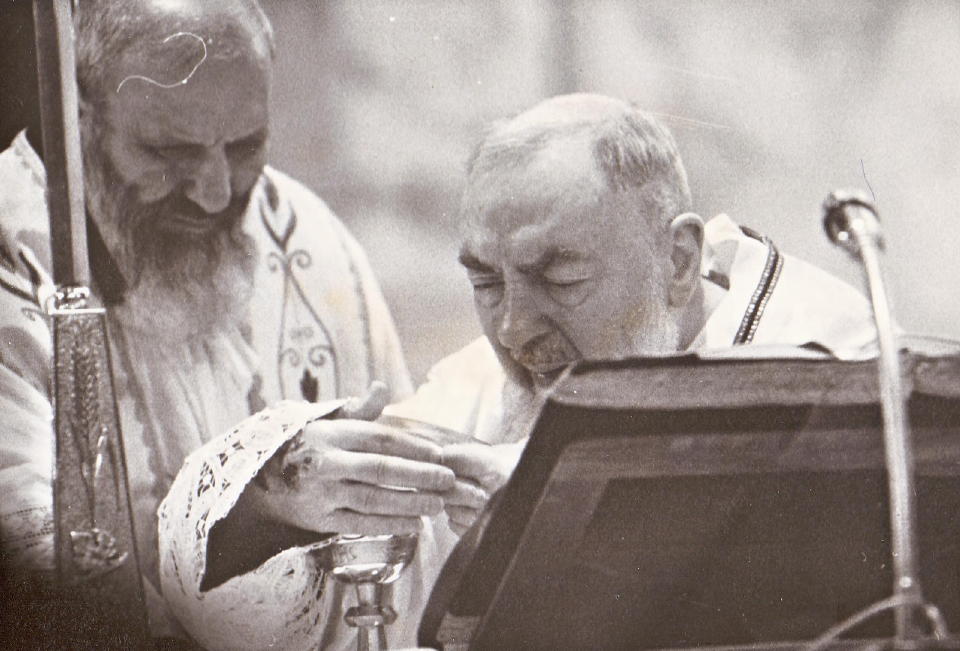
.jpg) March
27, 1967
March
27, 1967

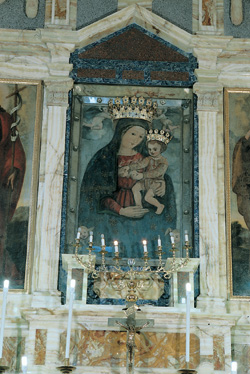
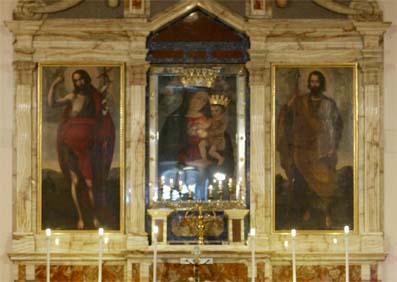
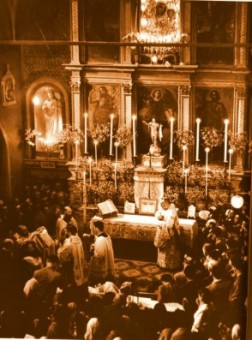


.gif)
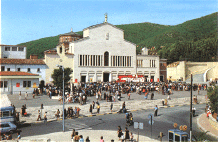

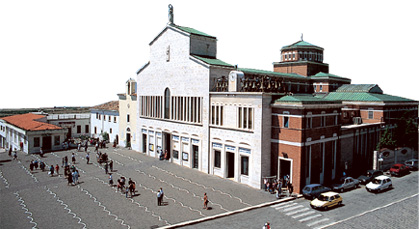
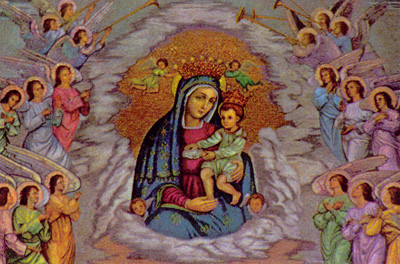
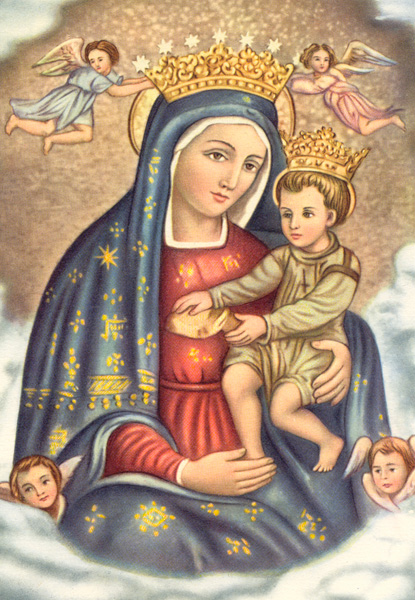
.jpg)

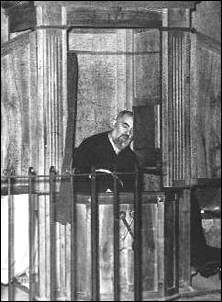


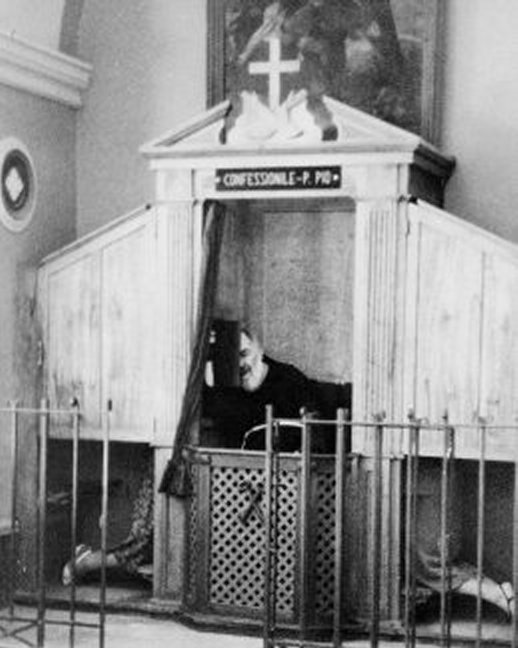
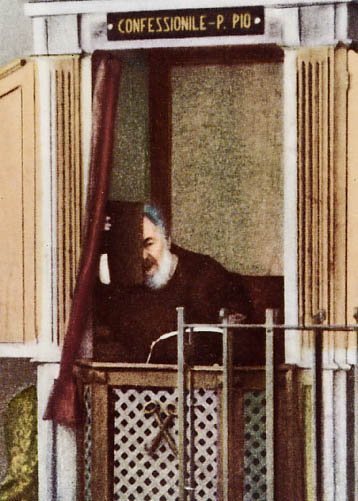
.jpg)
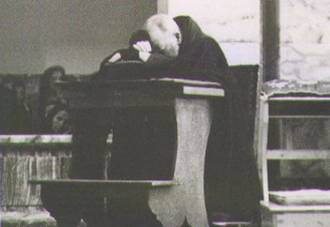
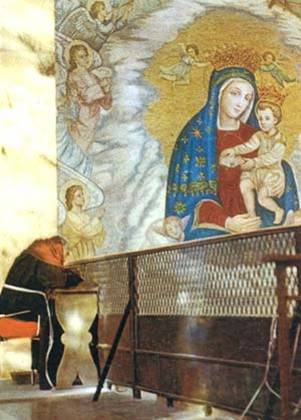
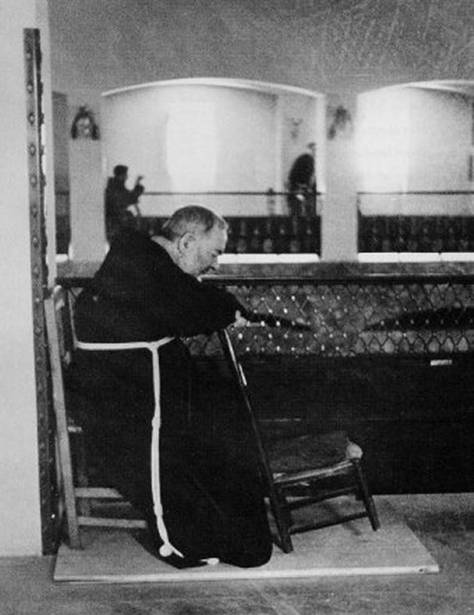
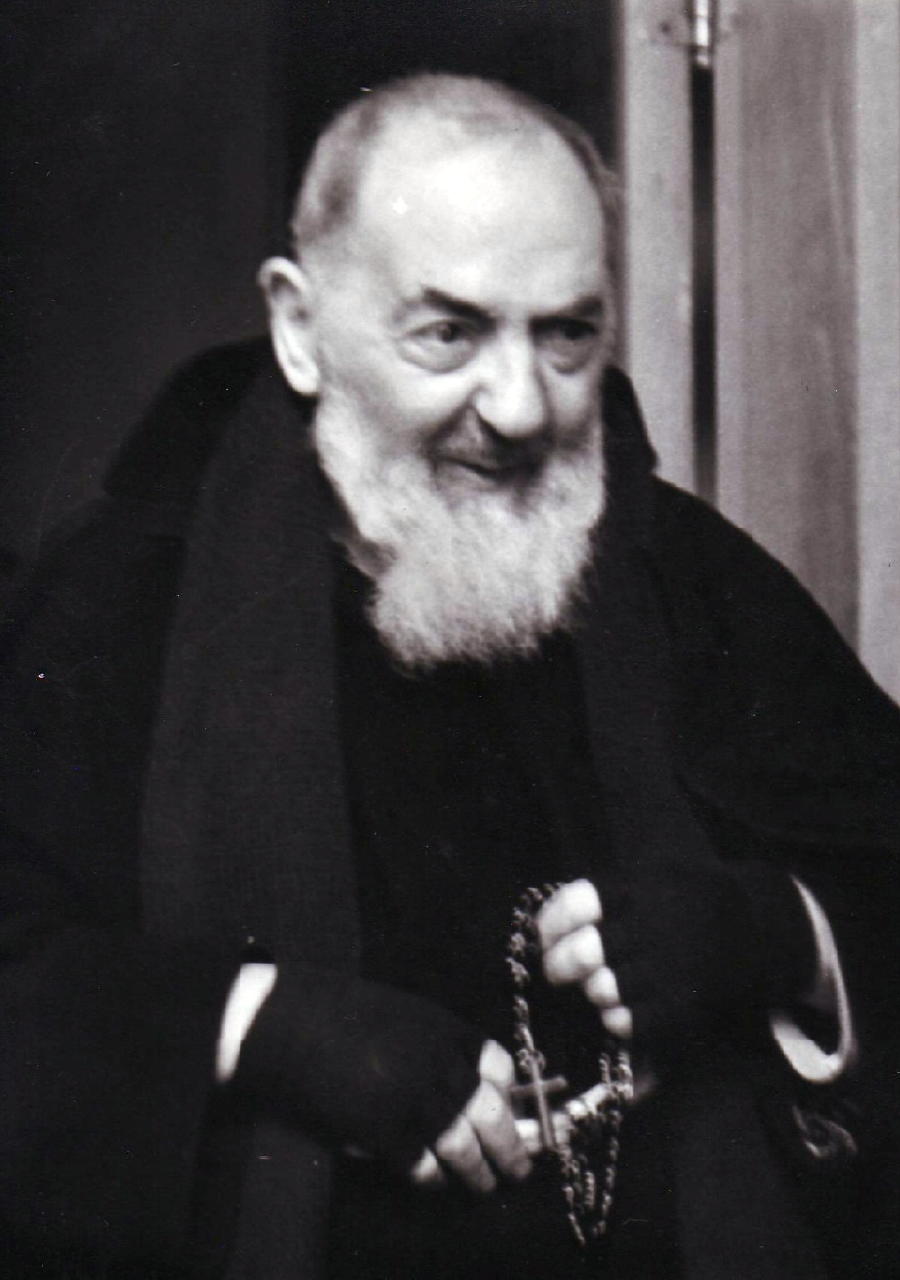
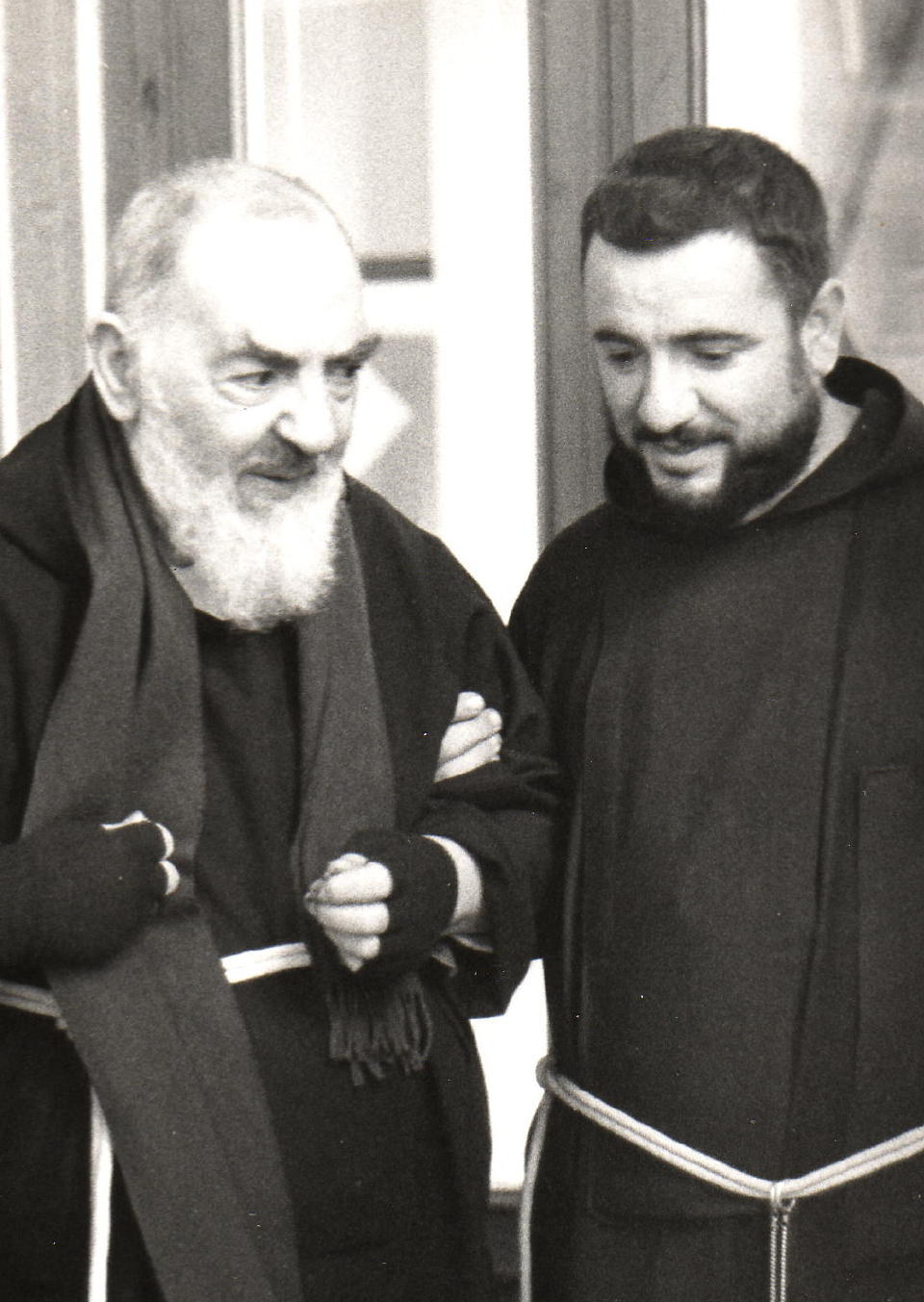
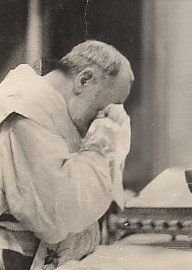
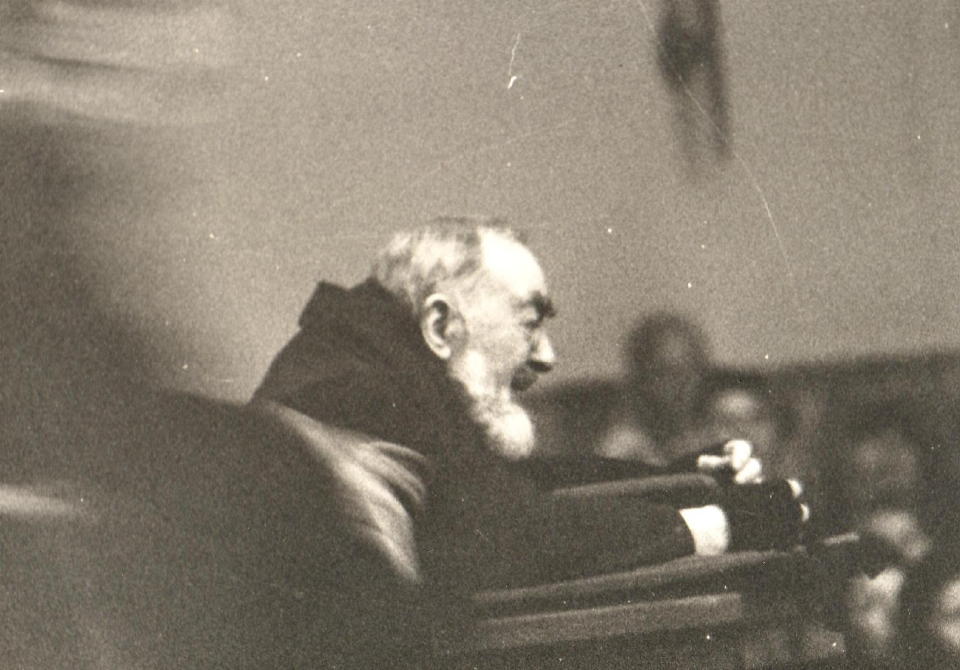
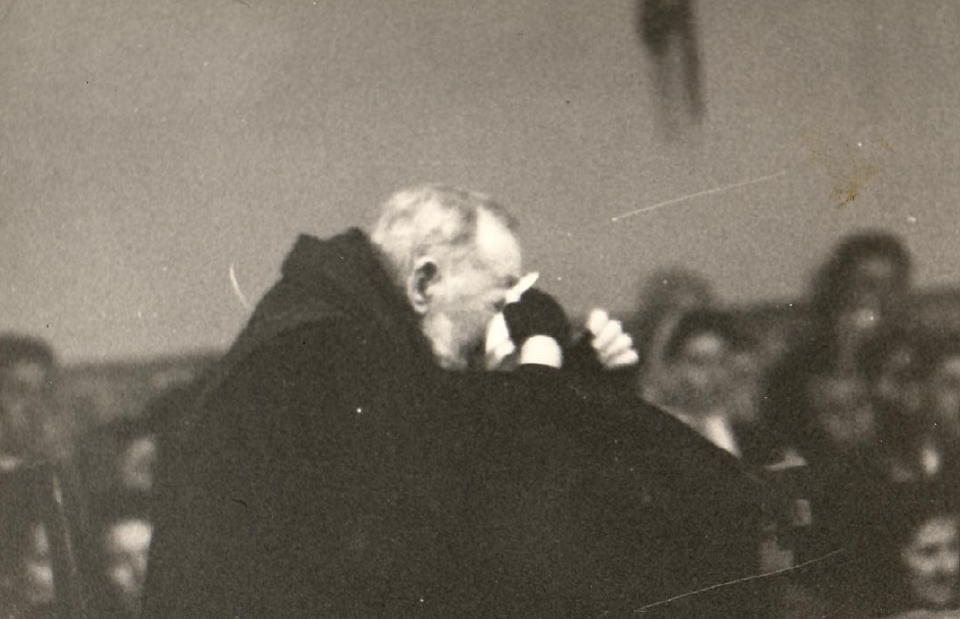
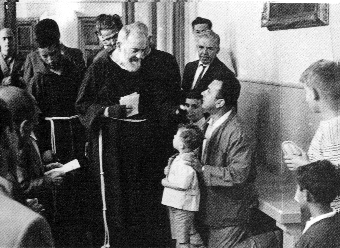
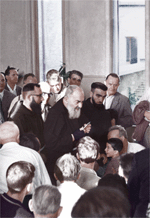
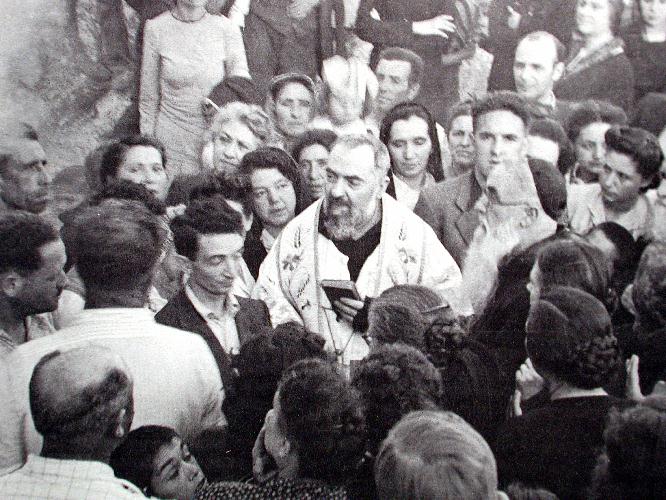

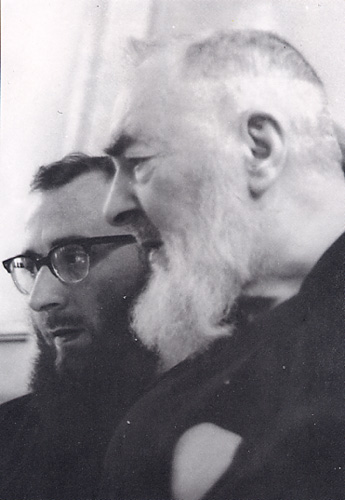
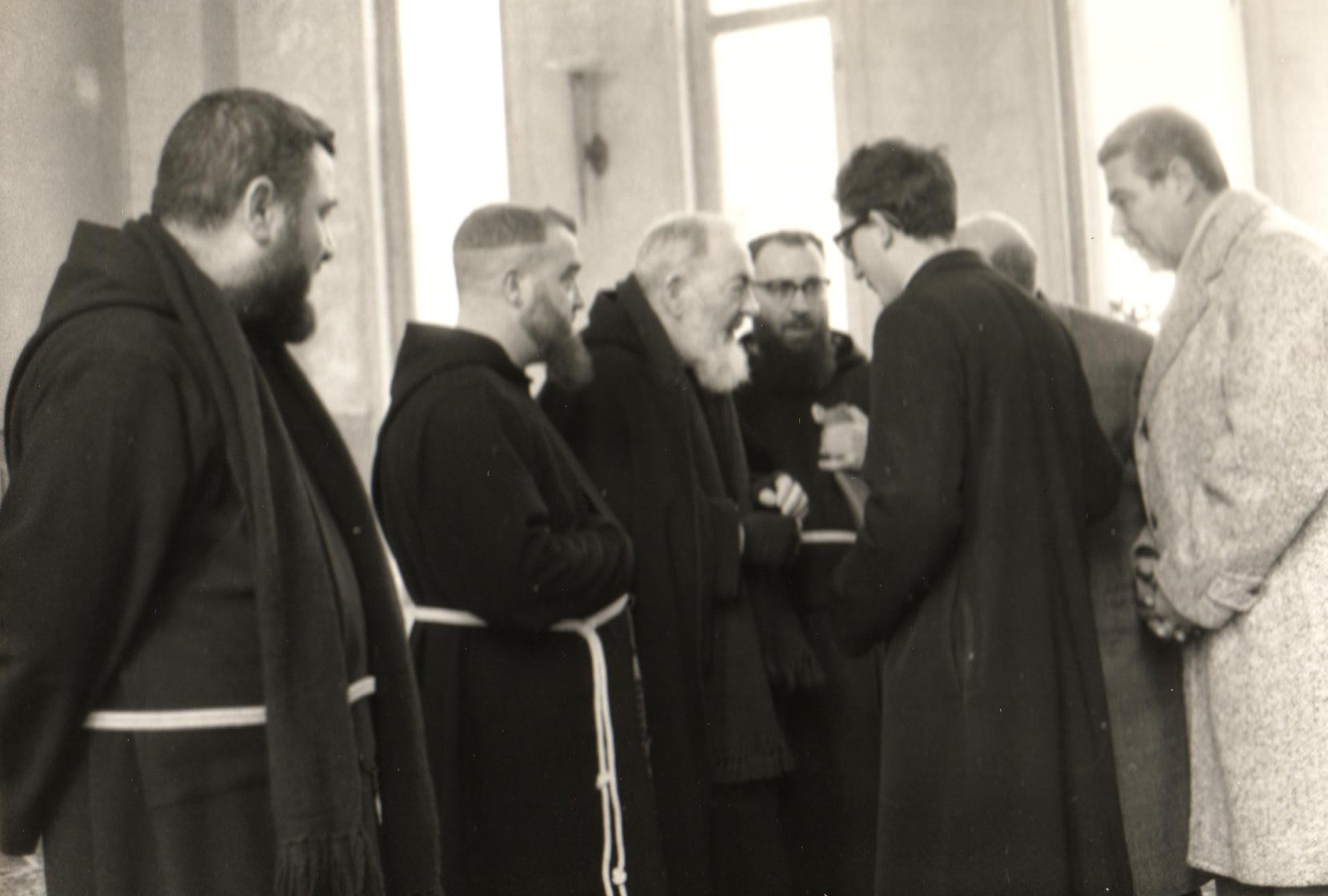
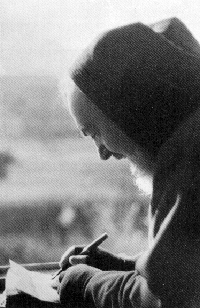
.jpg)

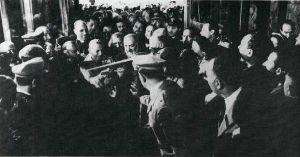
.jpg)
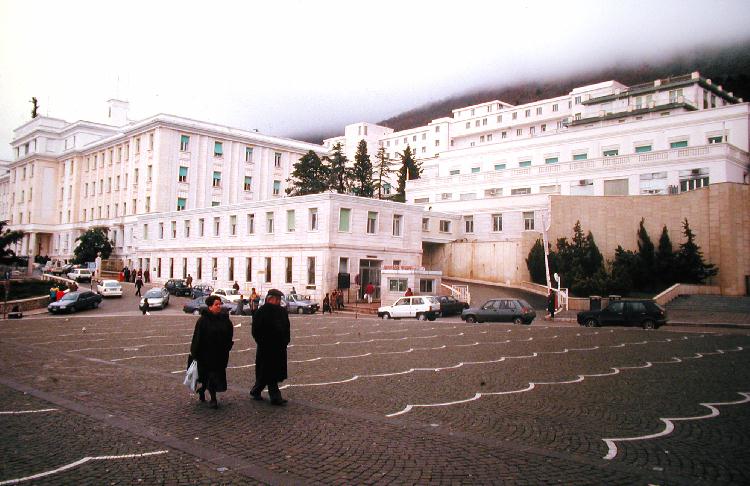

.jpg)
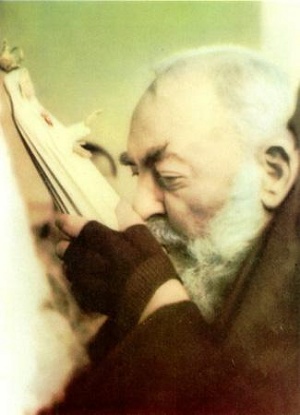

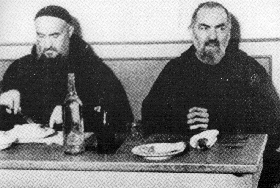
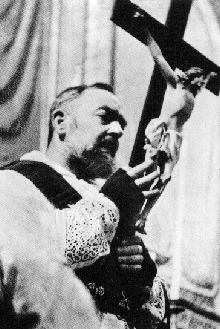
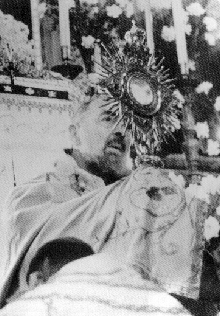

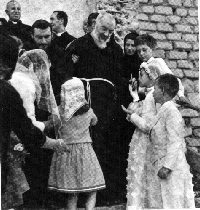
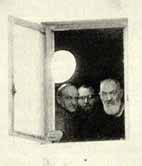
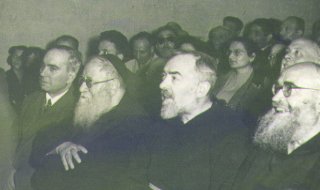
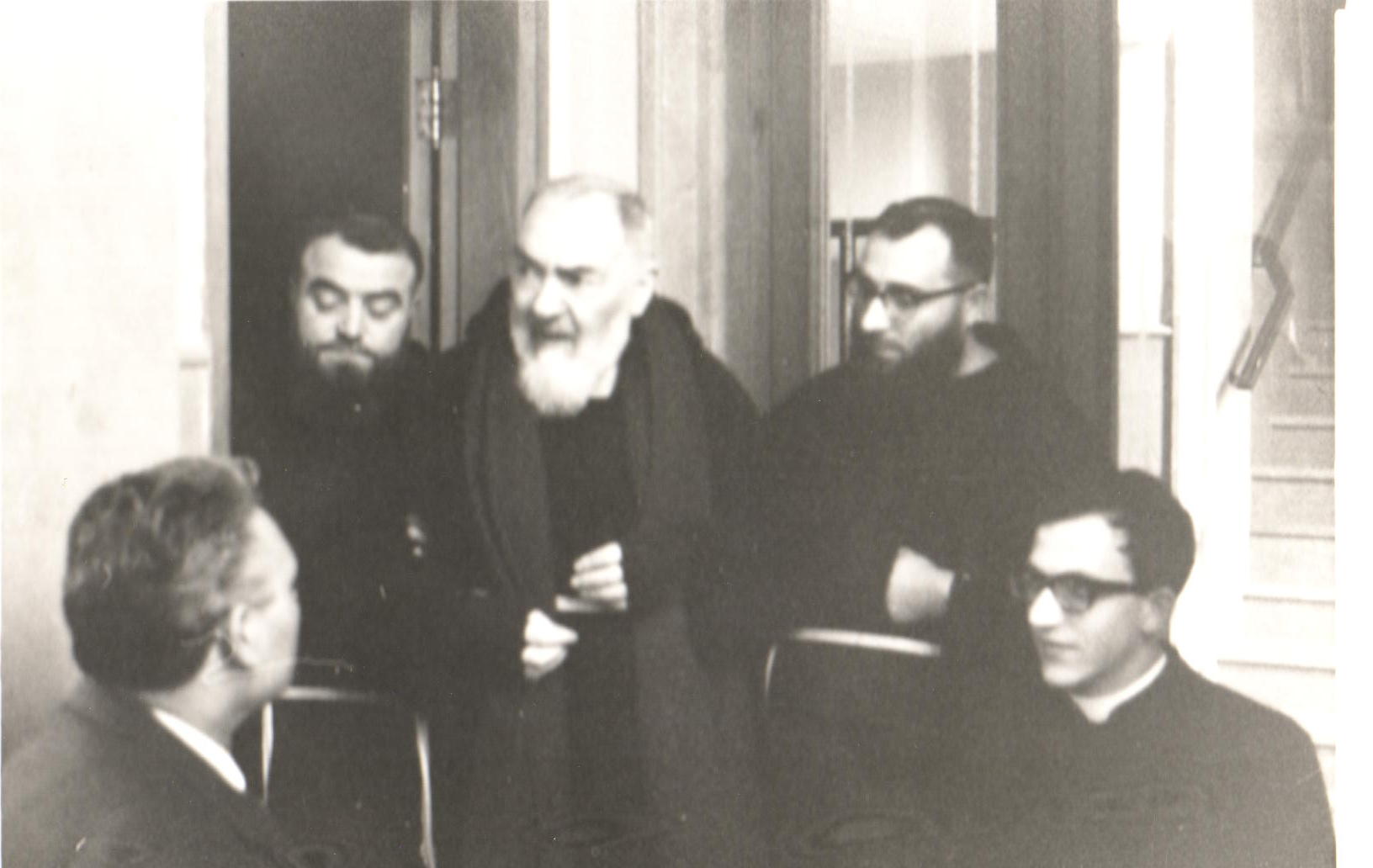
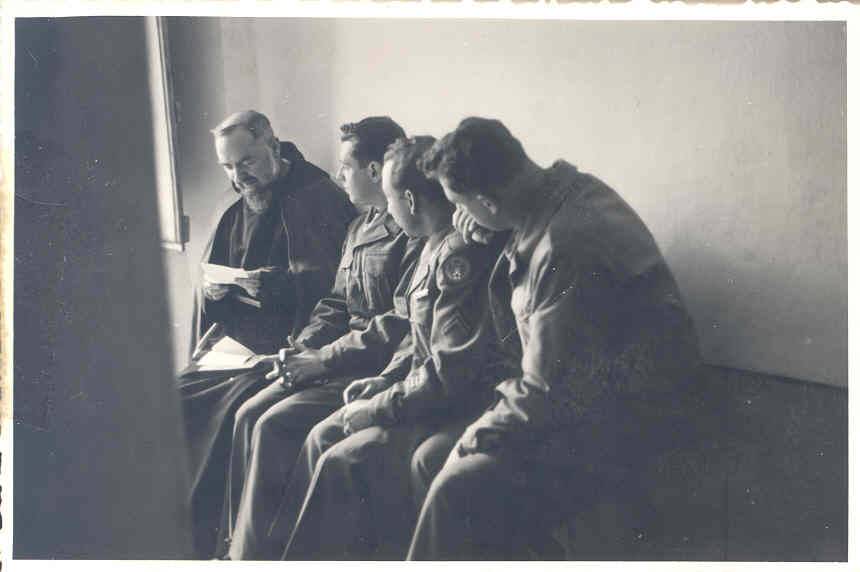
.jpg)
.jpg)


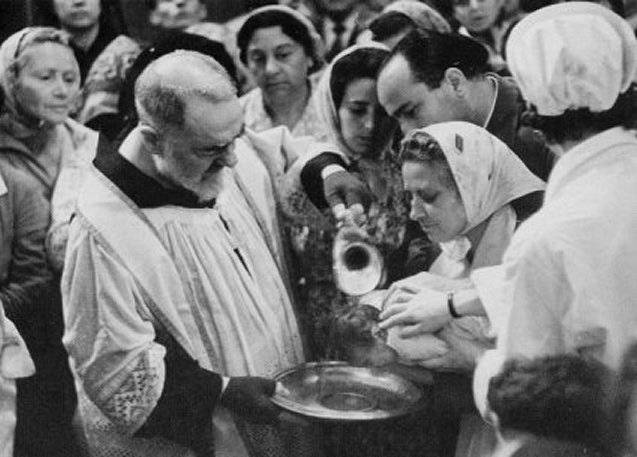
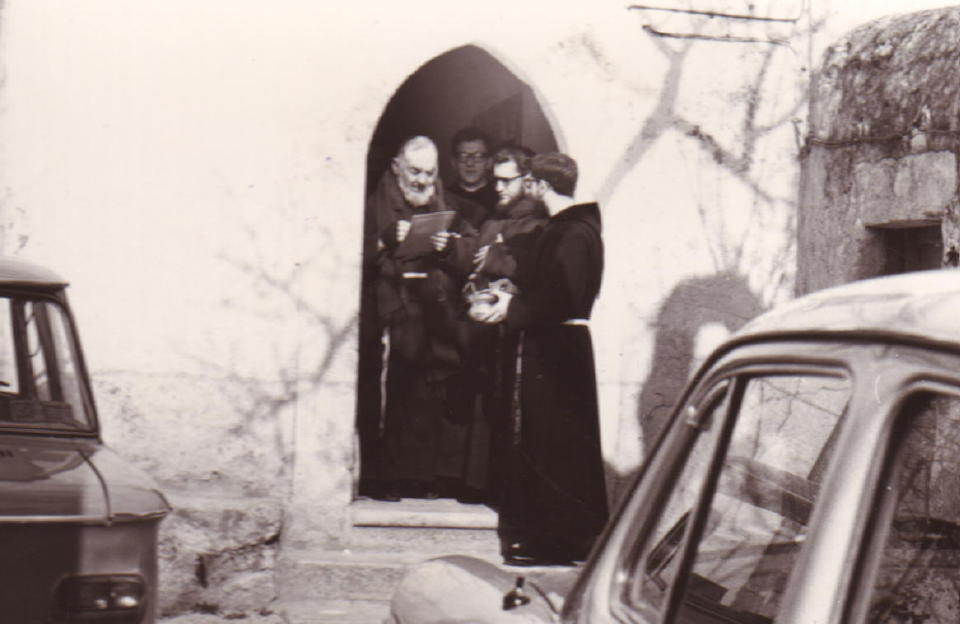
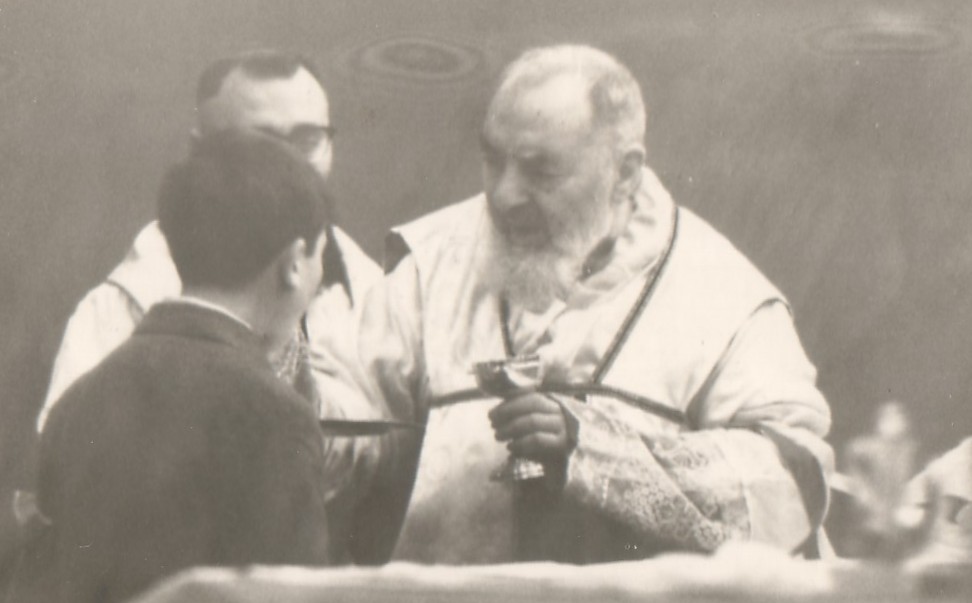
.jpg)
.jpg)
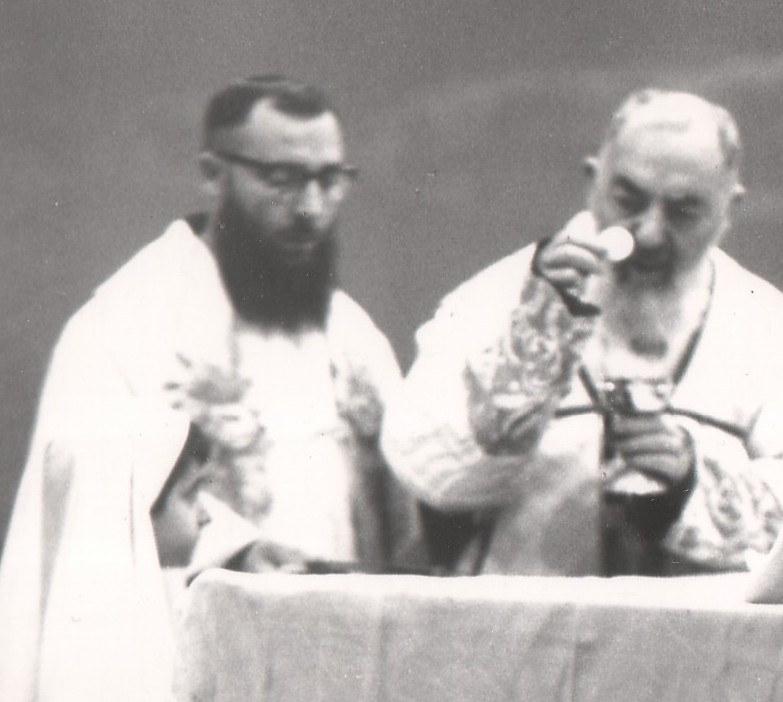
.jpg)
.jpg)
.jpg)
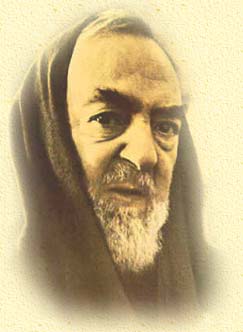
.jpg)
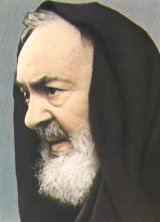
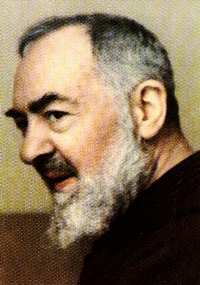
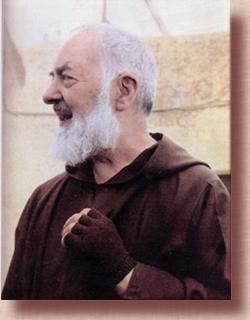
.jpg)
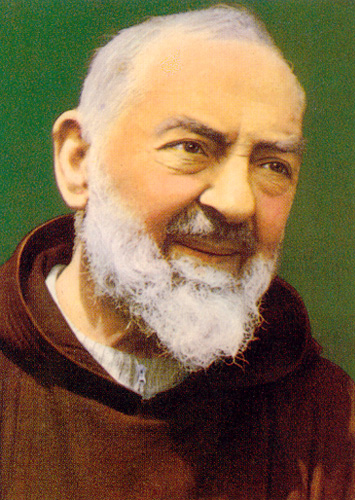
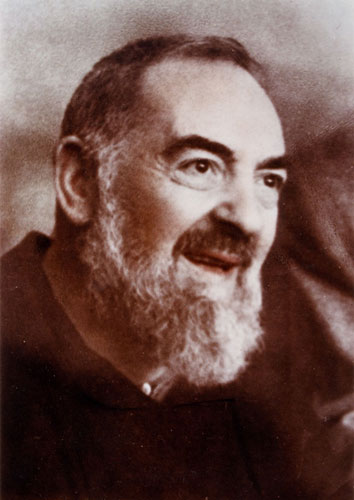

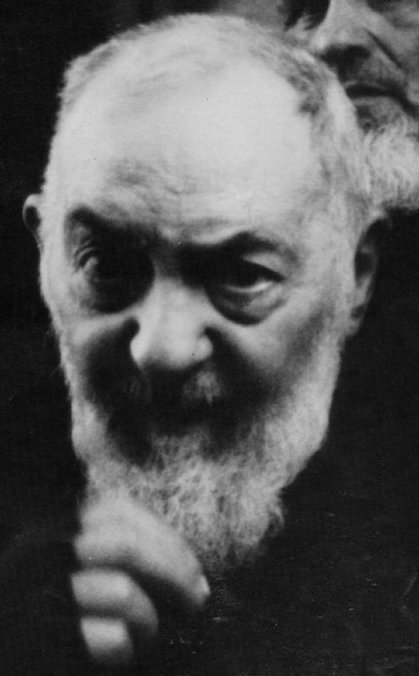

.jpg)
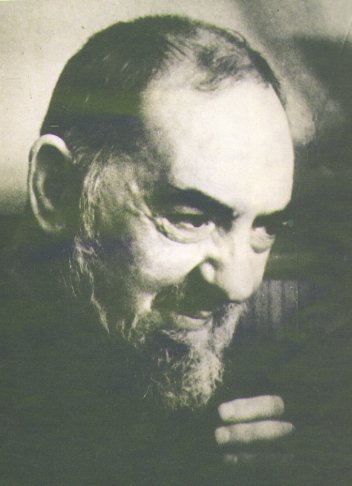
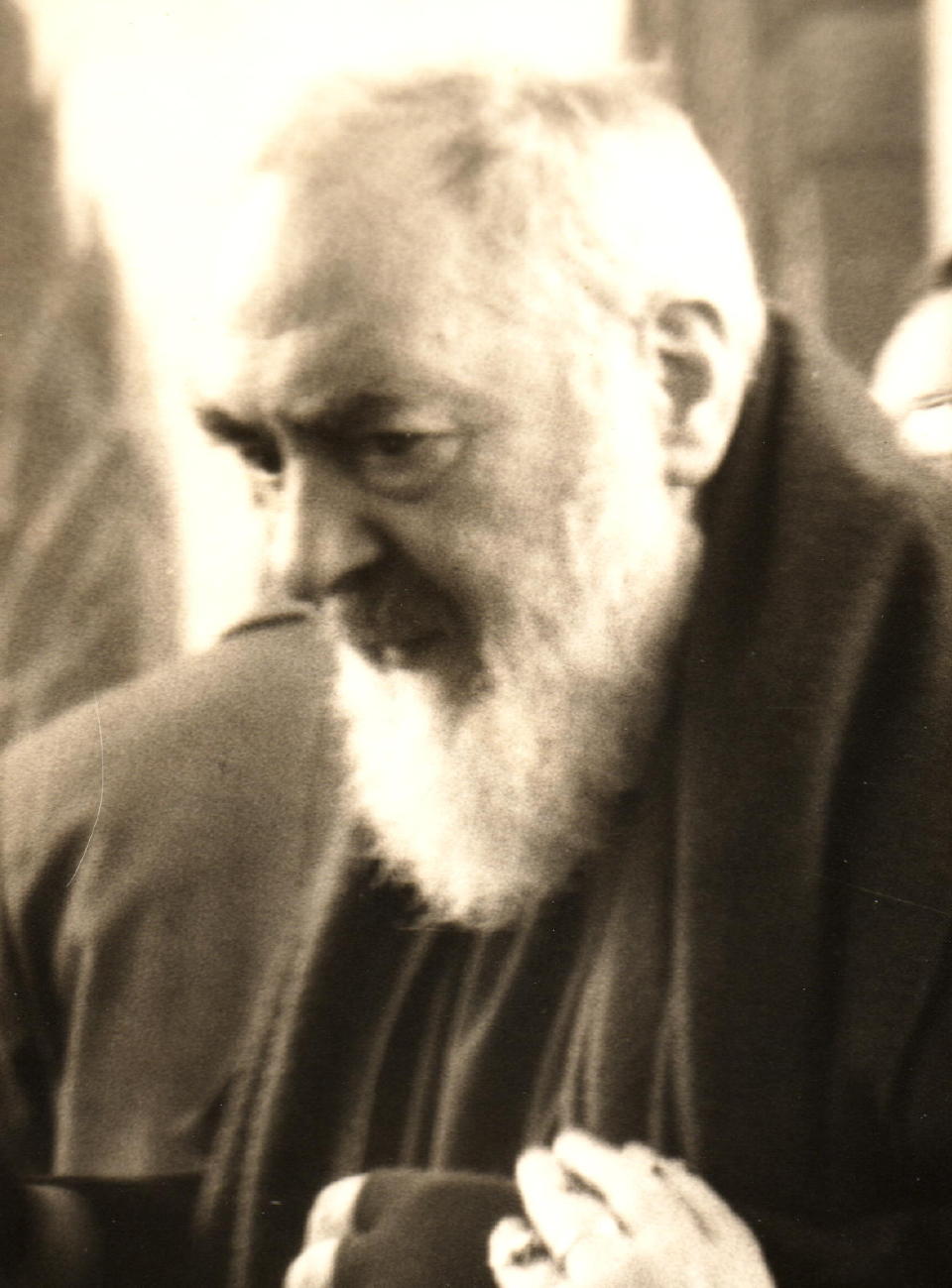
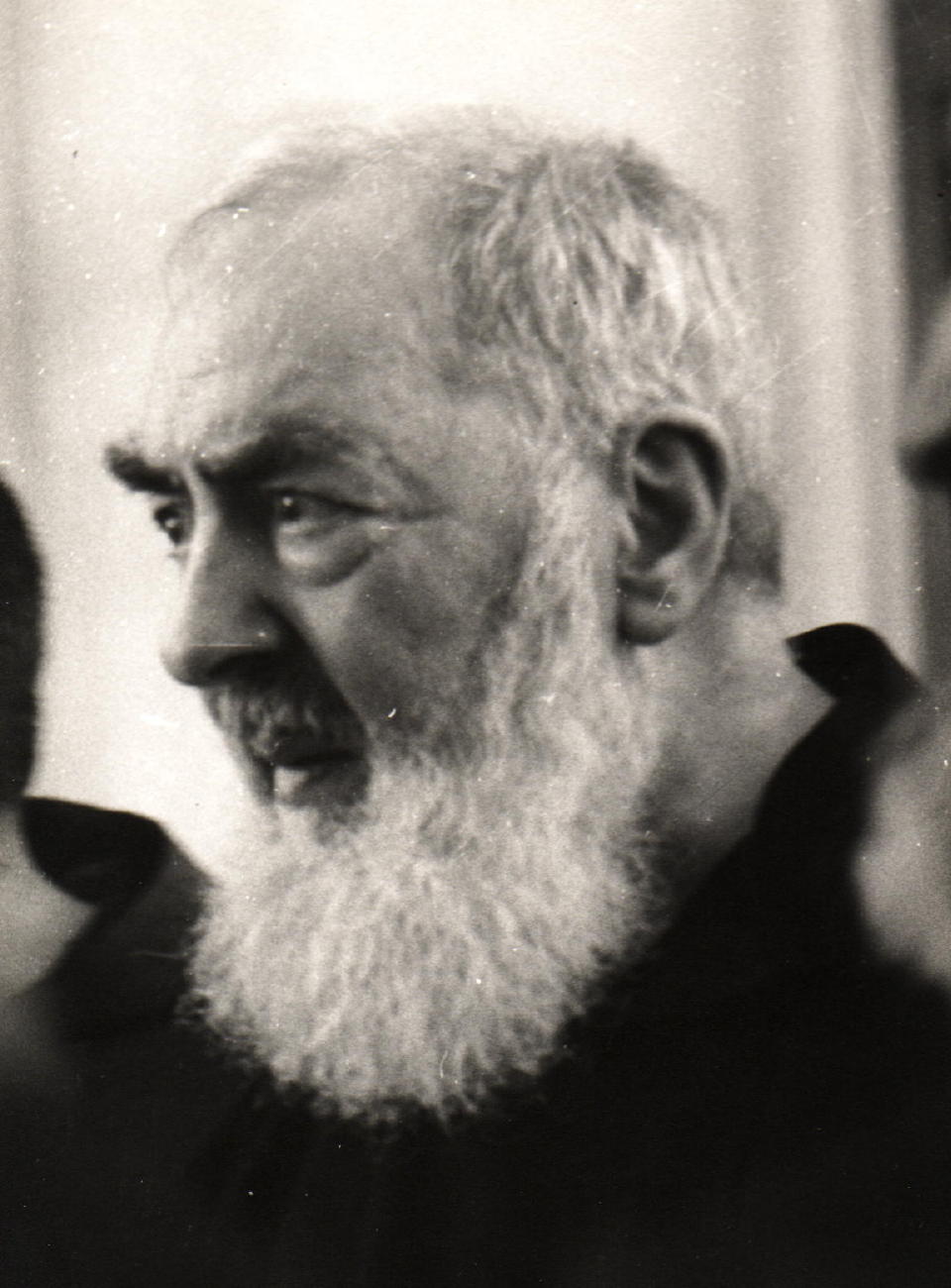
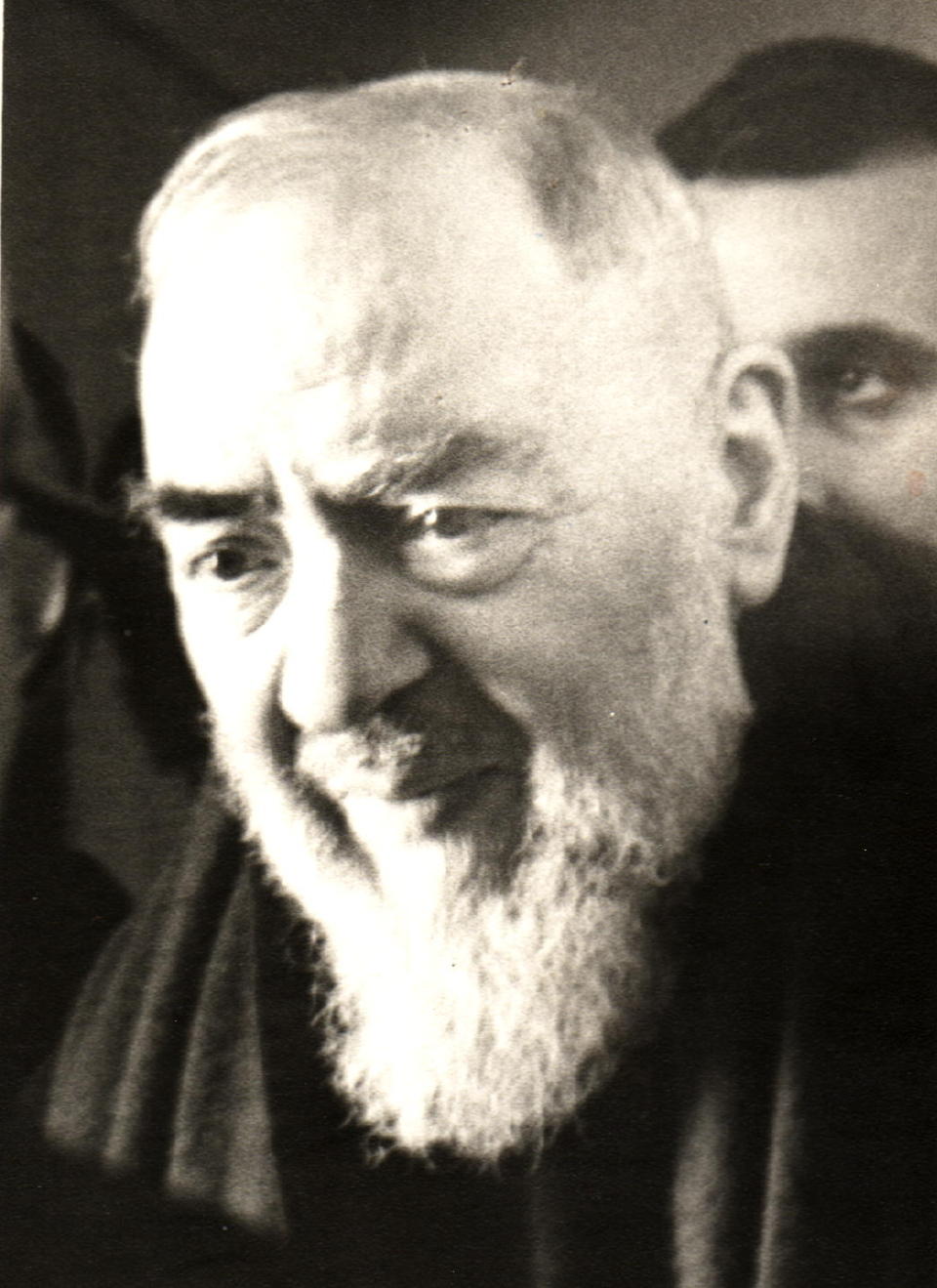
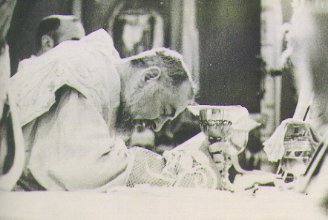
.jpg)
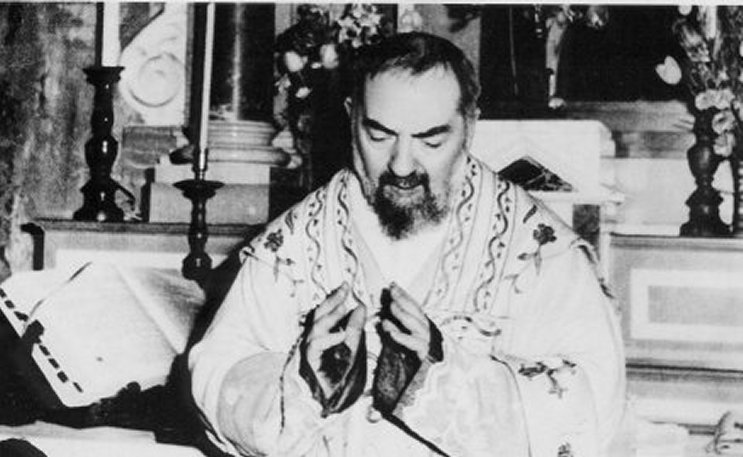
.jpg)
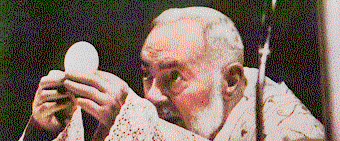
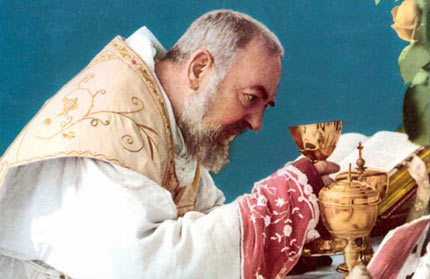

.jpg)

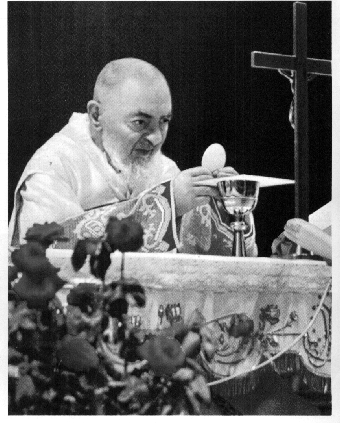
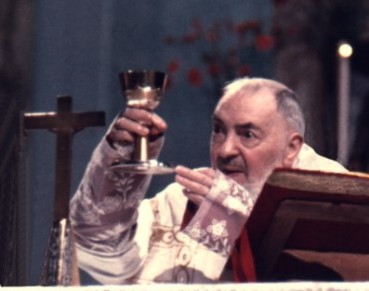
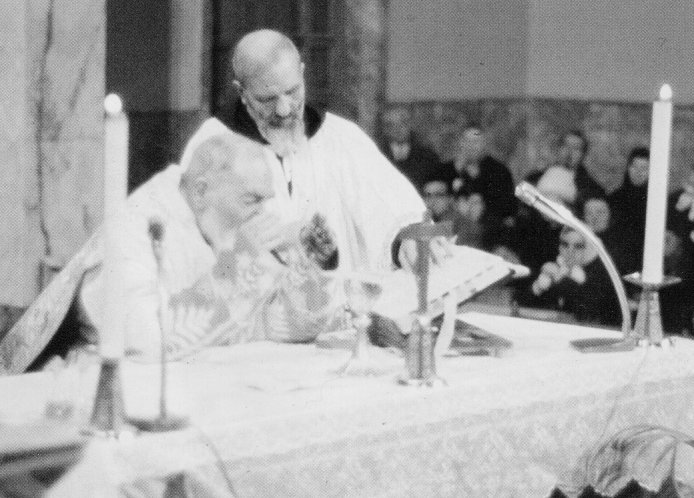
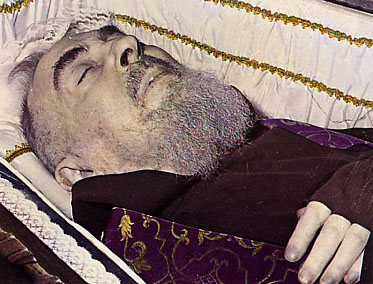

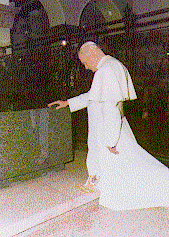
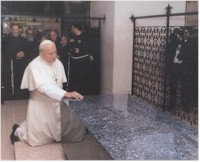

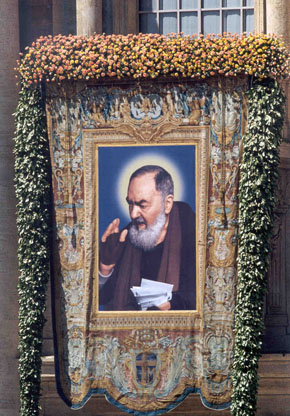
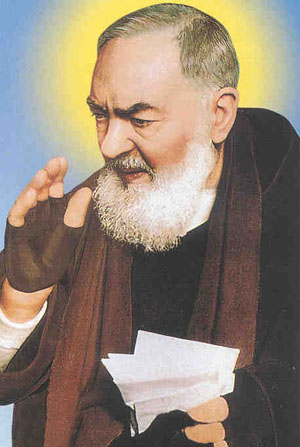
.jpg)
.jpg)
.jpg)

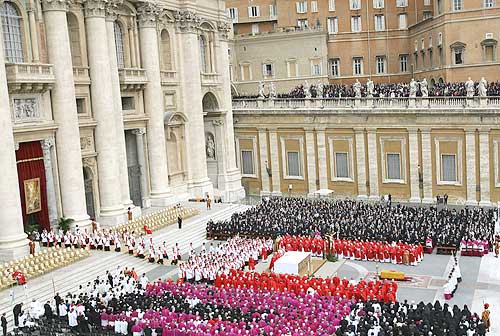
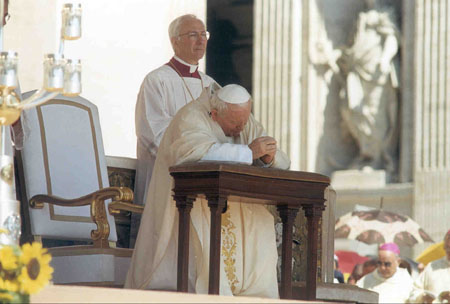
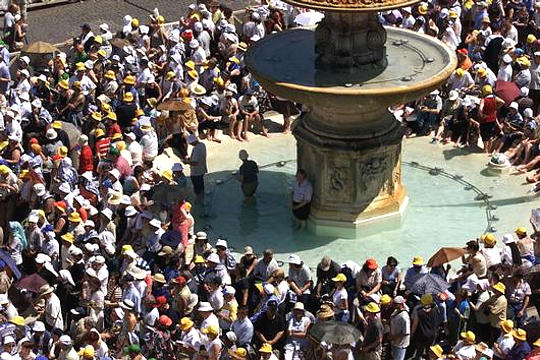
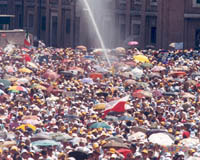
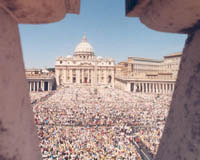
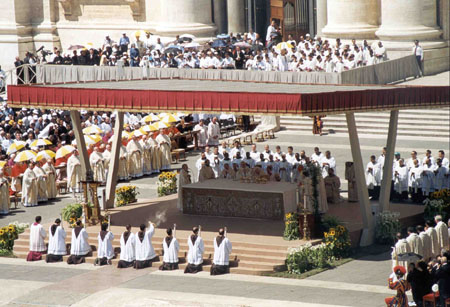
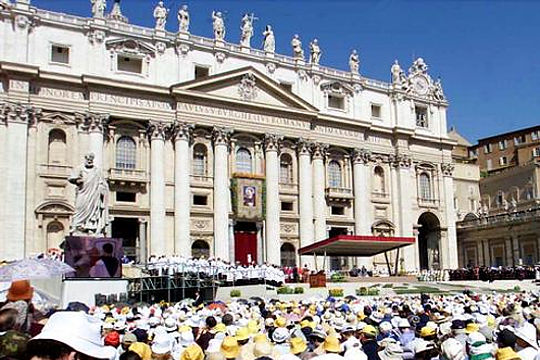
.jpg)
